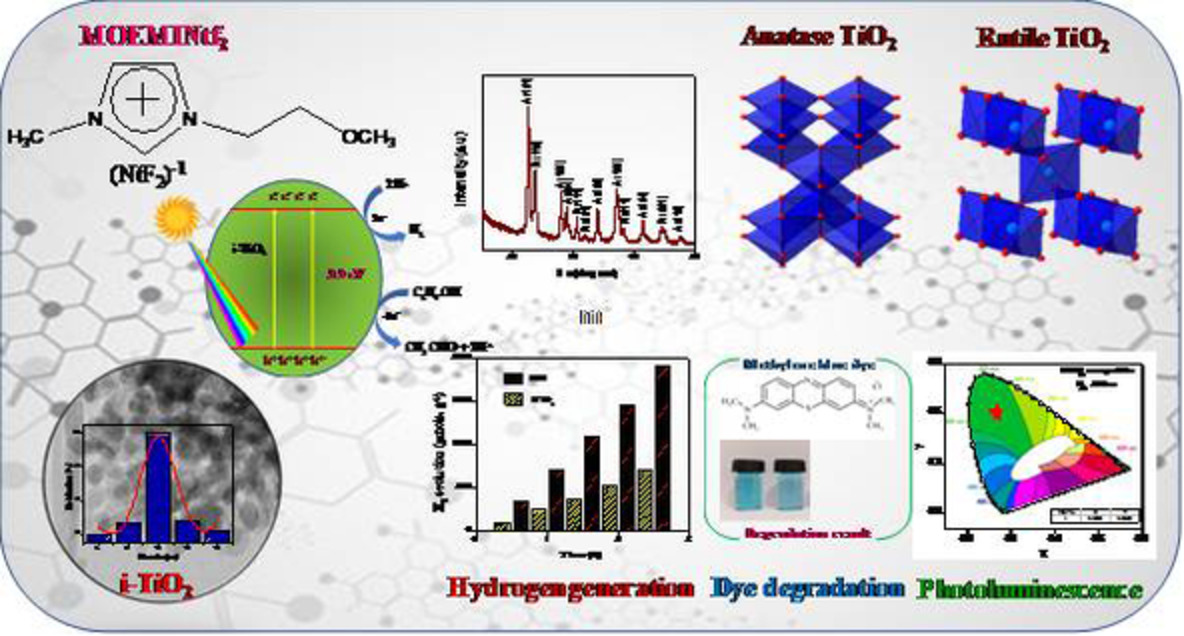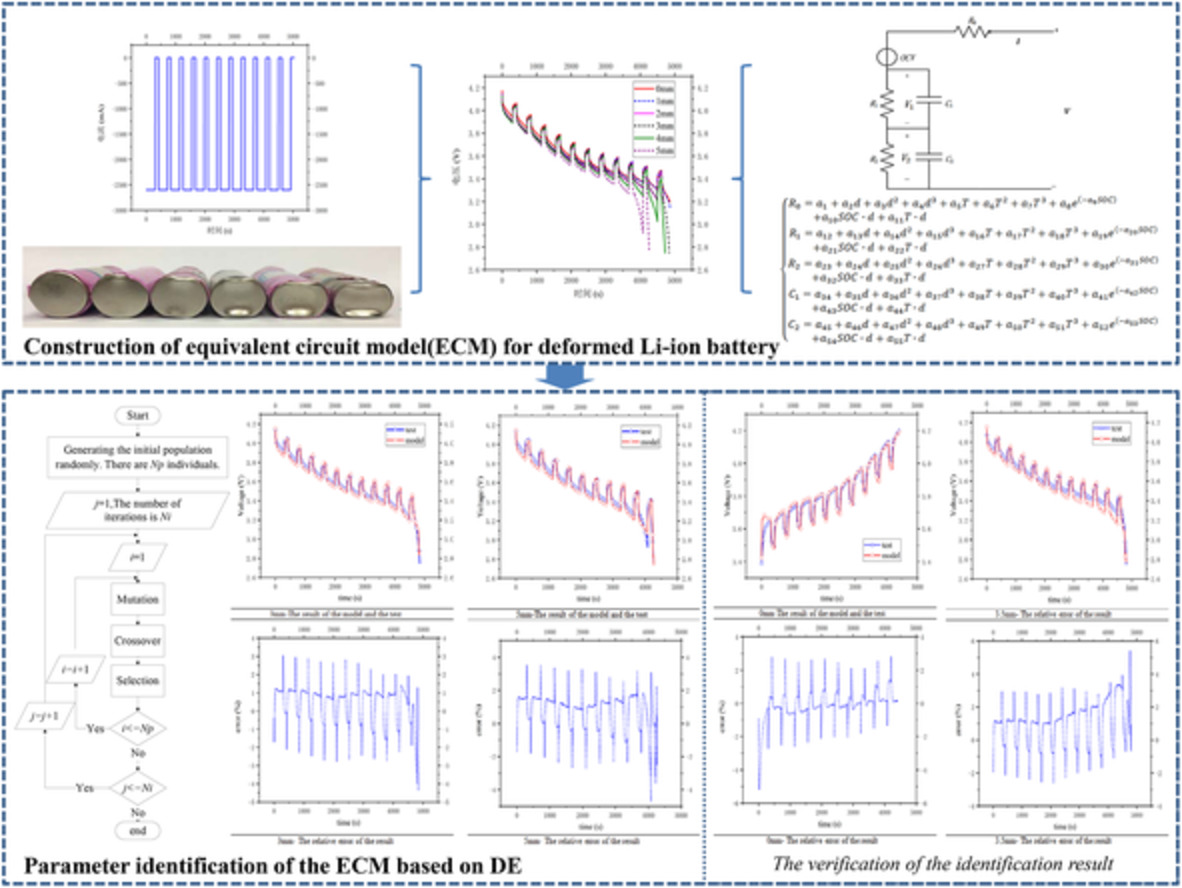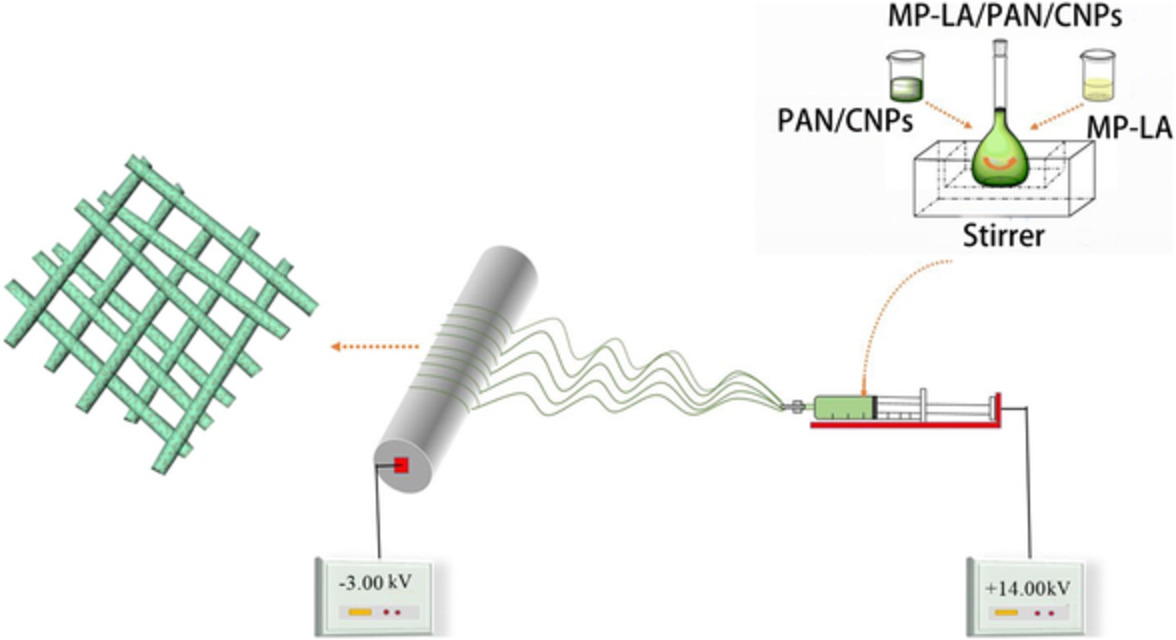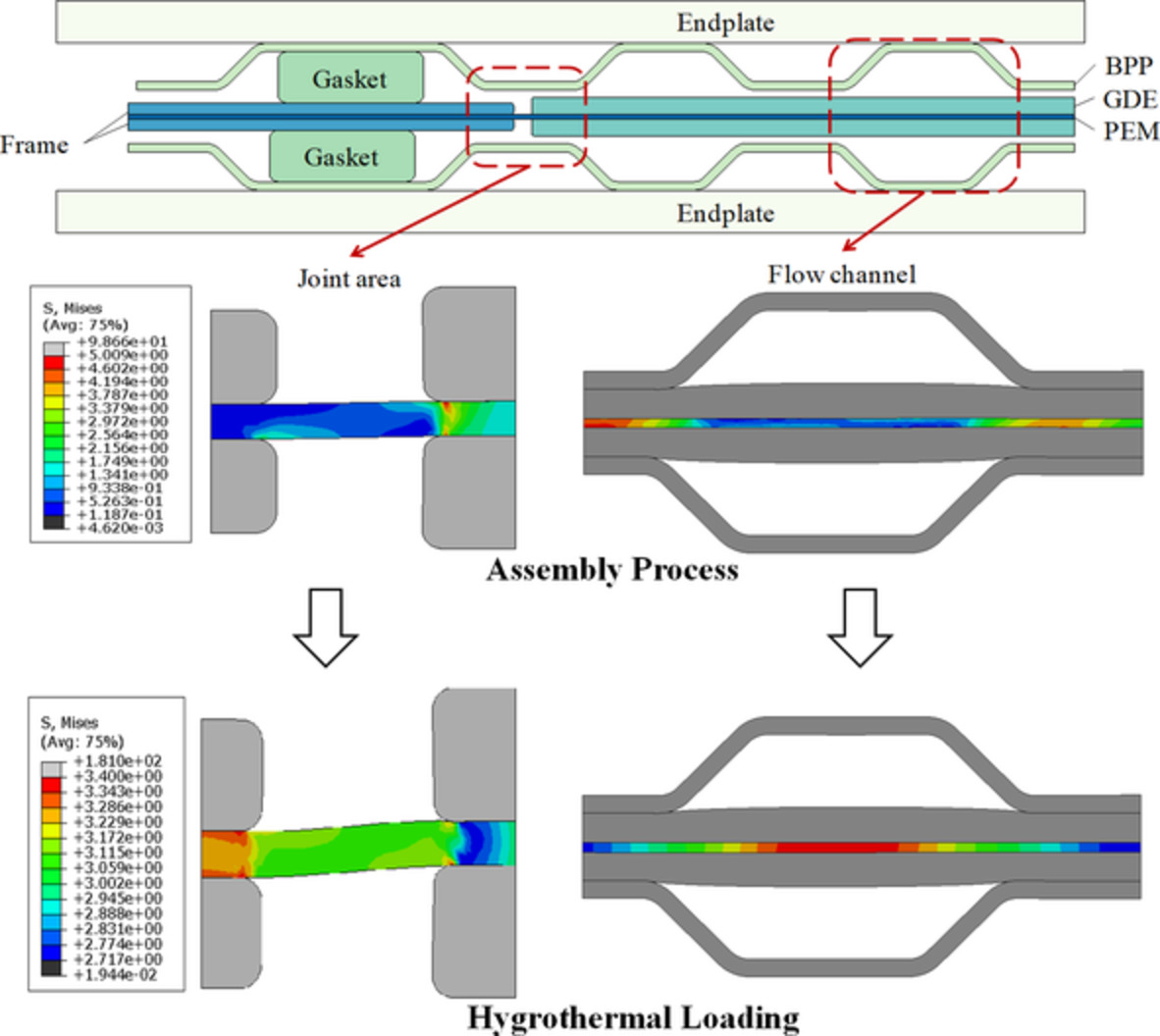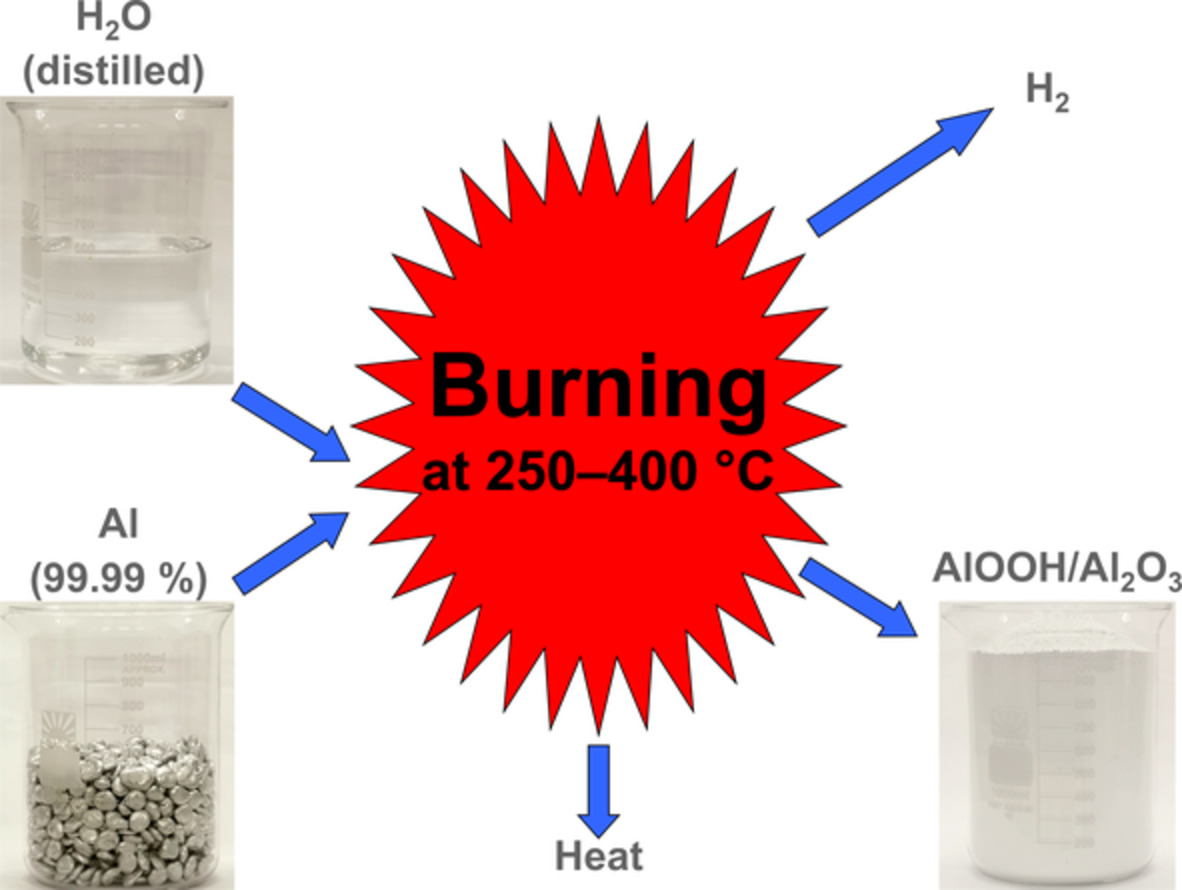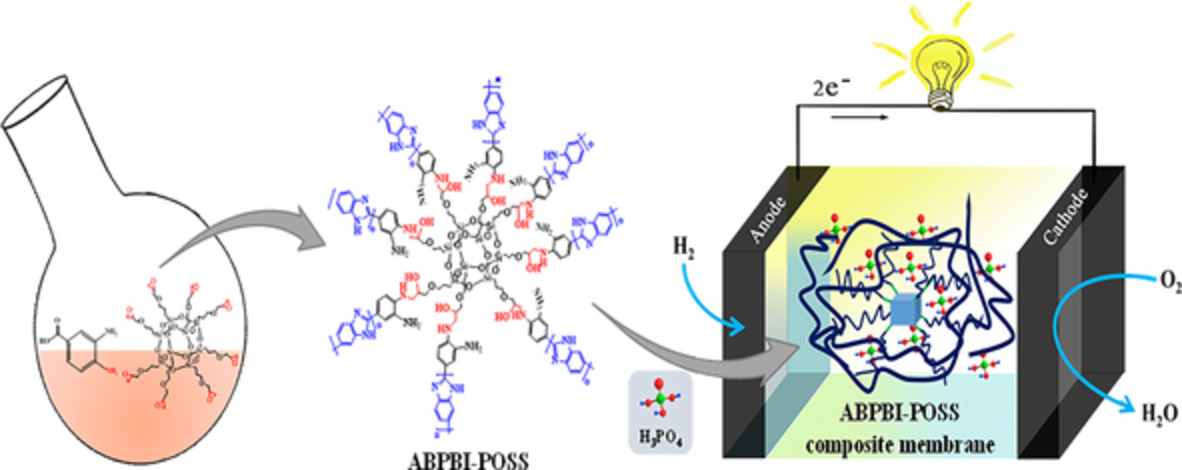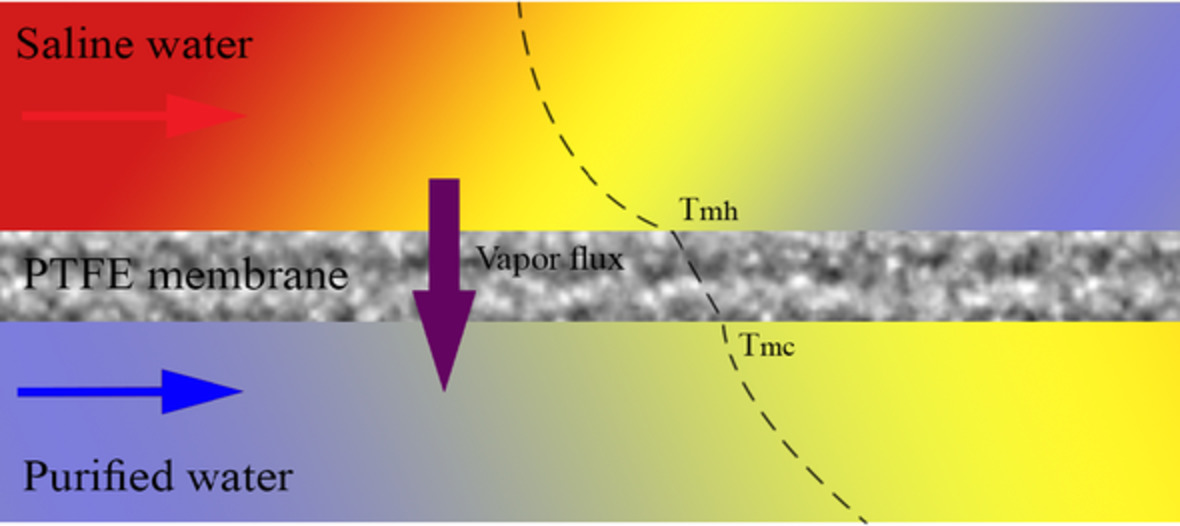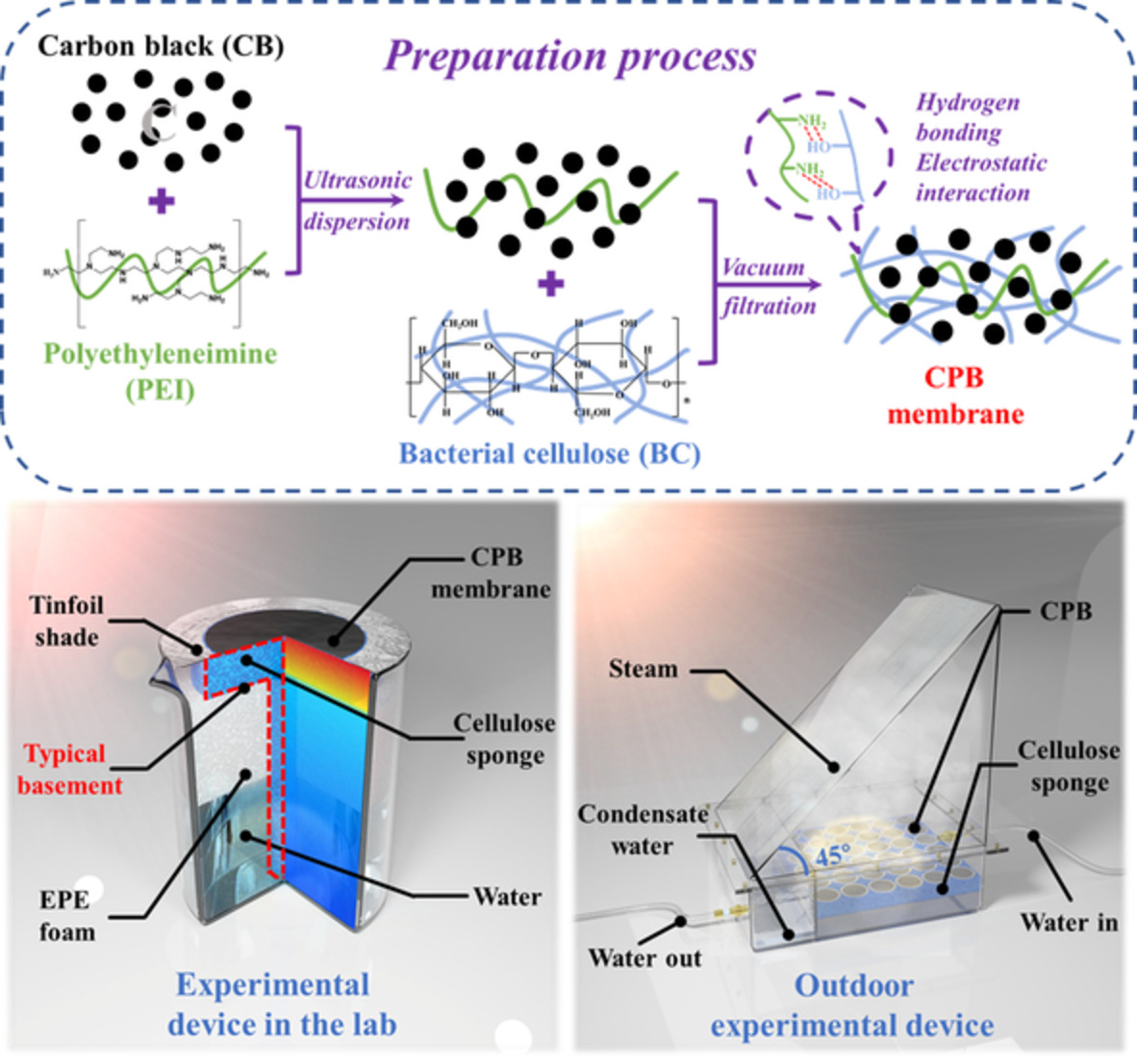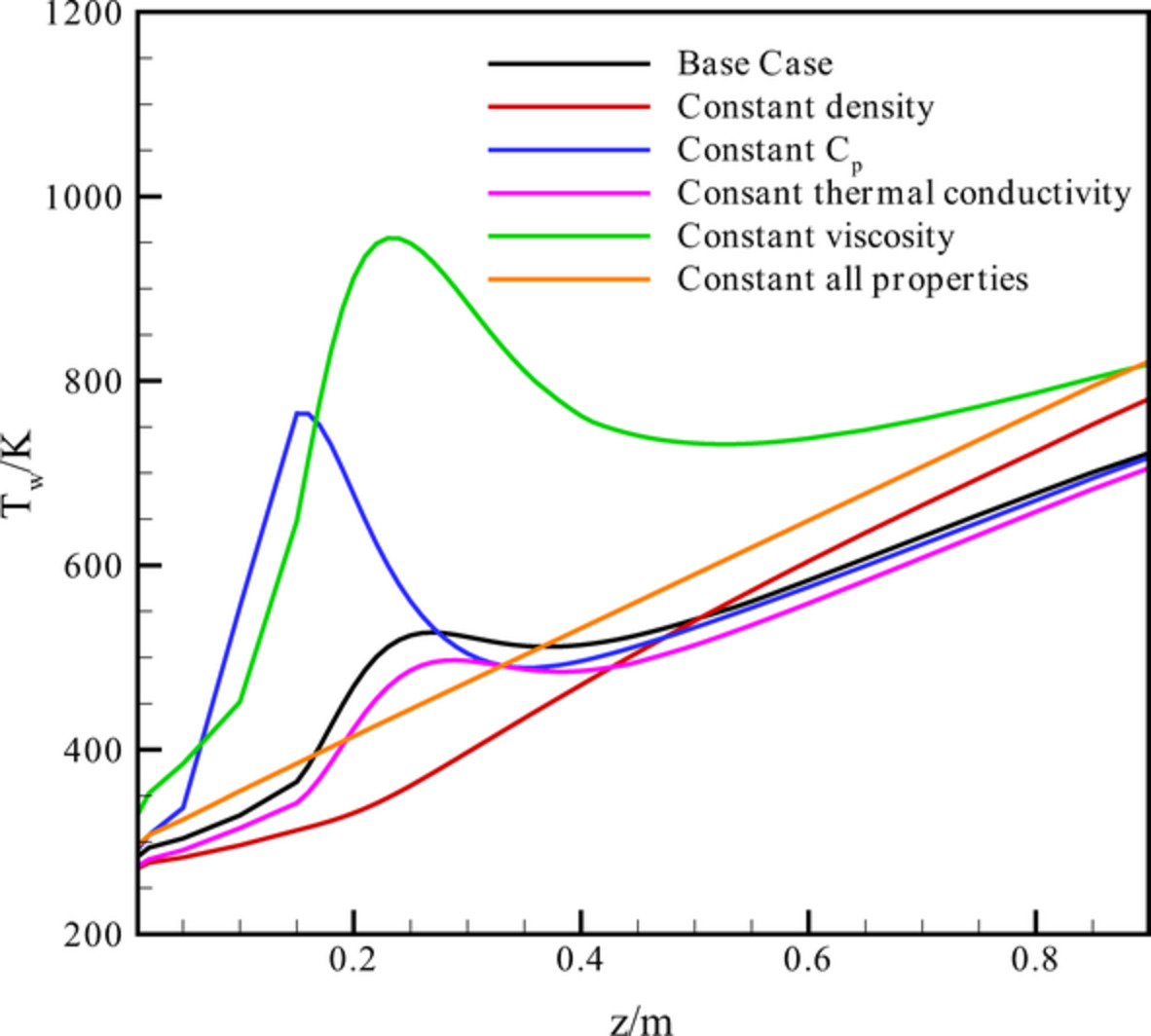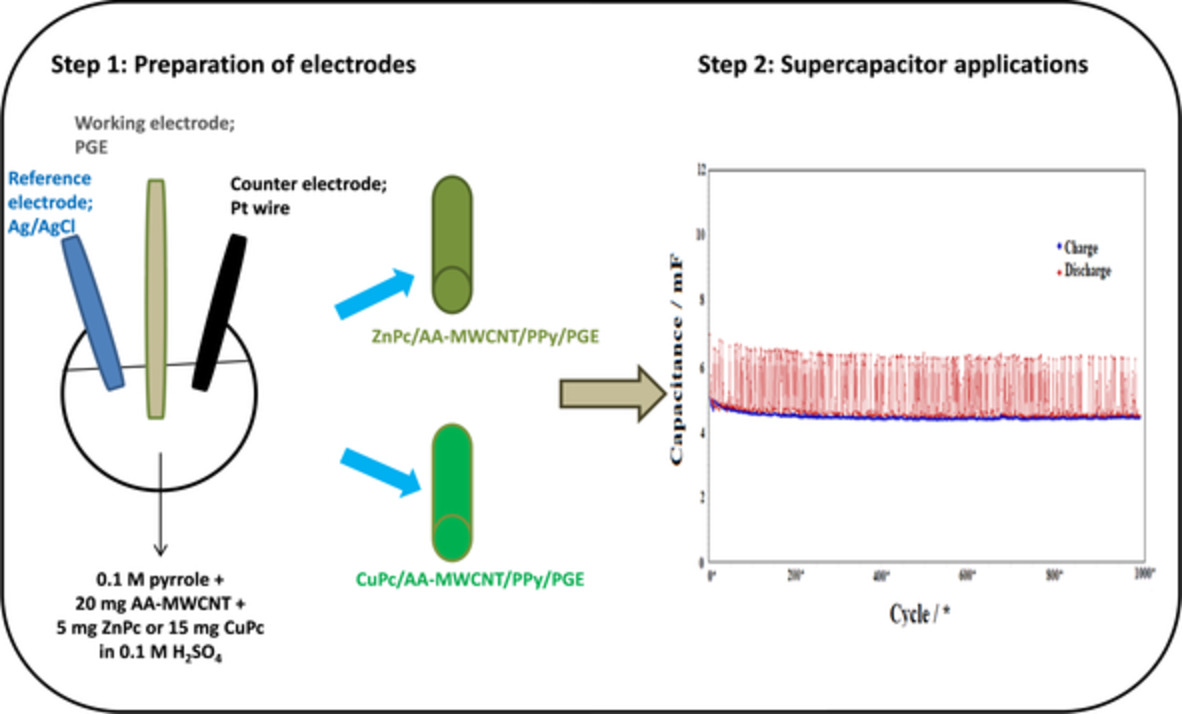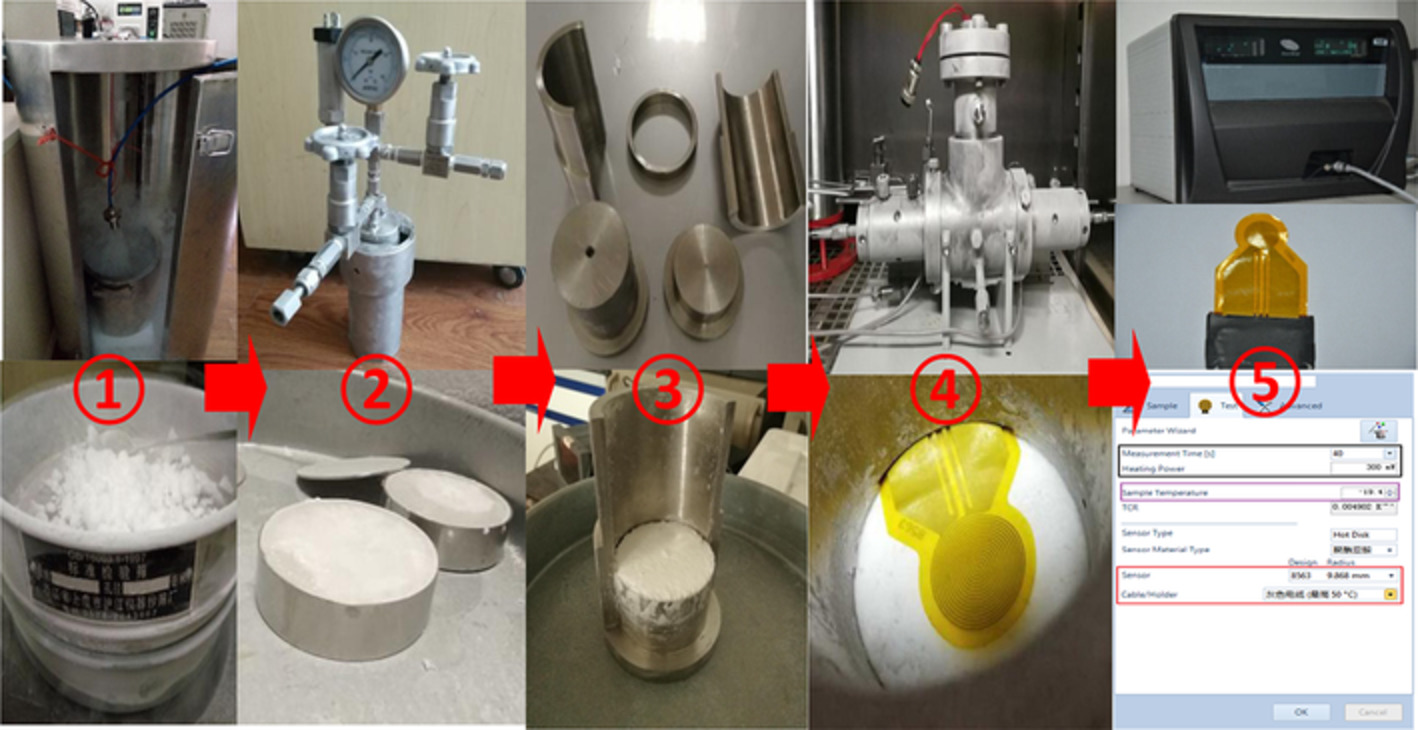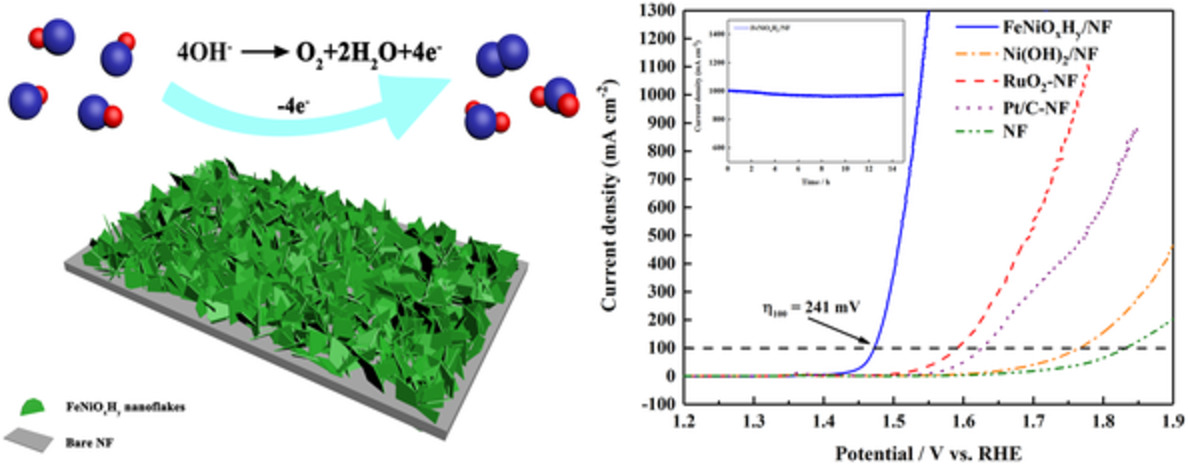Journal list menu
Export Citations
Download PDFs
Cover Image
- Page: i
- First Published: 17 August 2020
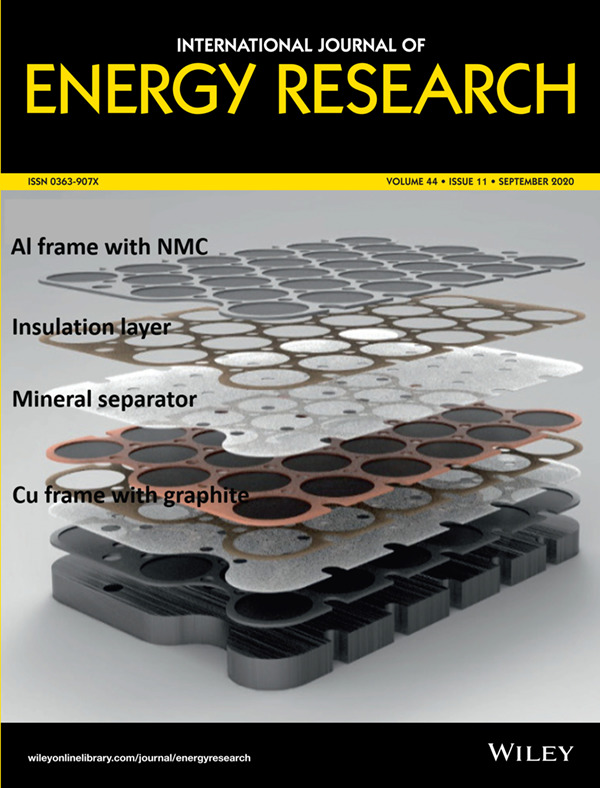
The cover image is based on the Research Article LiNi1/3Mn1/3Co1/3O2 with morphology optimized for novel concept of 3D Li accumulator by Markéta Zukalová et al., https://doi.org/10.1002/er.5630.
Cover Image
- Page: ii
- First Published: 17 August 2020
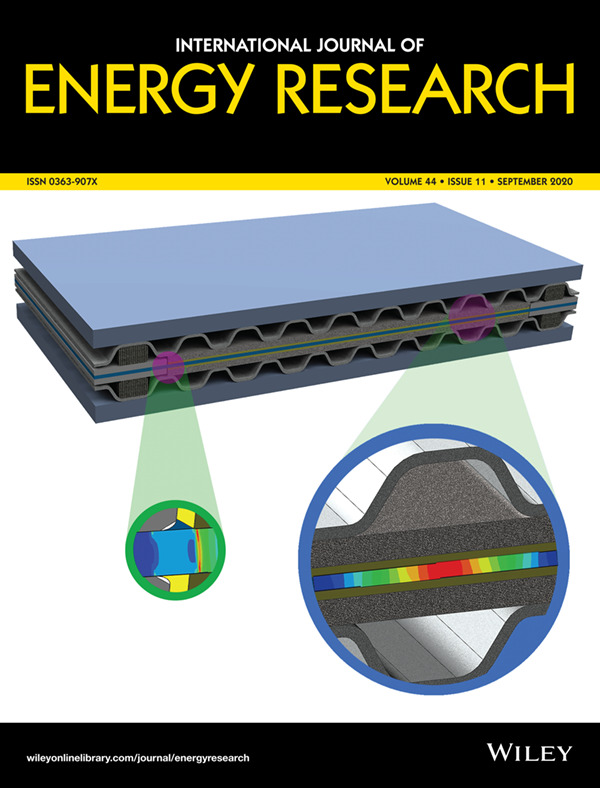
The cover image is based on the Research Article Mechanical degradation of proton exchange membrane during assembly and running processes in proton exchange membrane fuel cells with metallic bipolar plates by Wenqing Liu et al., https://doi.org/10.1002/er.5550.
Issue Information
- Pages: 8229-8232
- First Published: 17 August 2020
Hydrogen production technologies: Attractiveness and future perspective
- Pages: 8233-8254
- First Published: 03 June 2020
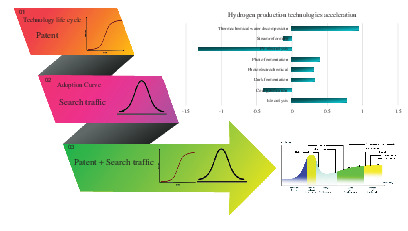
Hydrogen production technologies patent publication are extracted and analysed. The attractiveness of each technology, according to the family patents and forward citation are assessed. By employing patent publication trends and traffic search, the hype cycle of Hydrogen production technologies is depicted.
A review of progressive advanced polymer nanohybrid membrane in fuel cell application
- Pages: 8255-8295
- First Published: 23 May 2020
Fabrication of high-quality electrode films for solid oxide fuel cell by screen printing: A review on important processing parameters
- Pages: 8296-8313
- First Published: 25 May 2020

Among all thin-film fabrication methods, screen printing is known for its capability to form homogenous-porous SOFC electrode films; however, the processing parameters of screen printing at three primary stages (prior, during, and postprinting) are rarely explored. As such, the current paper highlights important parameters in screen printing, such as ink rheology, printing number, and sintering, to contribute to the understanding of the influence of these parameters on SOFC electrode film quality and their effects on electrochemical performance.
Sandwich architecture of graphene/MoS2 composite as anodes for enhanced reversible lithium and sodium storage
- Pages: 8314-8327
- First Published: 23 June 2020
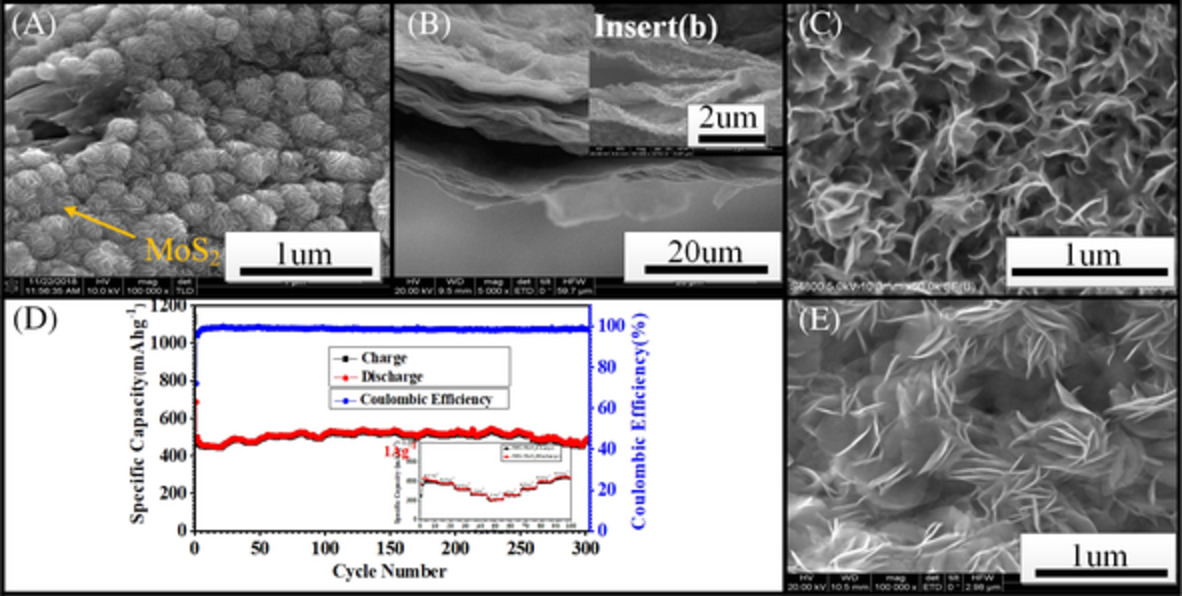
- 3DG-MoS2 hybrid nanomaterials with particular 3D sandwich architecture have been synthesized by simple solution evaporation, followed by the thiourea hydrothermal method.
- This particular architecture was characterized by combining the advantages of MoS2 and CuS and those of graphene would improve the lithium and sodium storage performance.
- This device from hybrid nanomaterials with particular 3D sandwich architecture exhibited excellent cycling and rate capability performance.
Red-emitting CaSc2O4:Eu3+ phosphor for NUV-based warm white LEDs: structural elucidation and Hirshfeld surface analysis
- Pages: 8328-8339
- First Published: 02 June 2020
Siting and sizing of the hydrogen refueling stations with on-site water electrolysis hydrogen production based on robust regret
- Pages: 8340-8361
- First Published: 13 June 2020
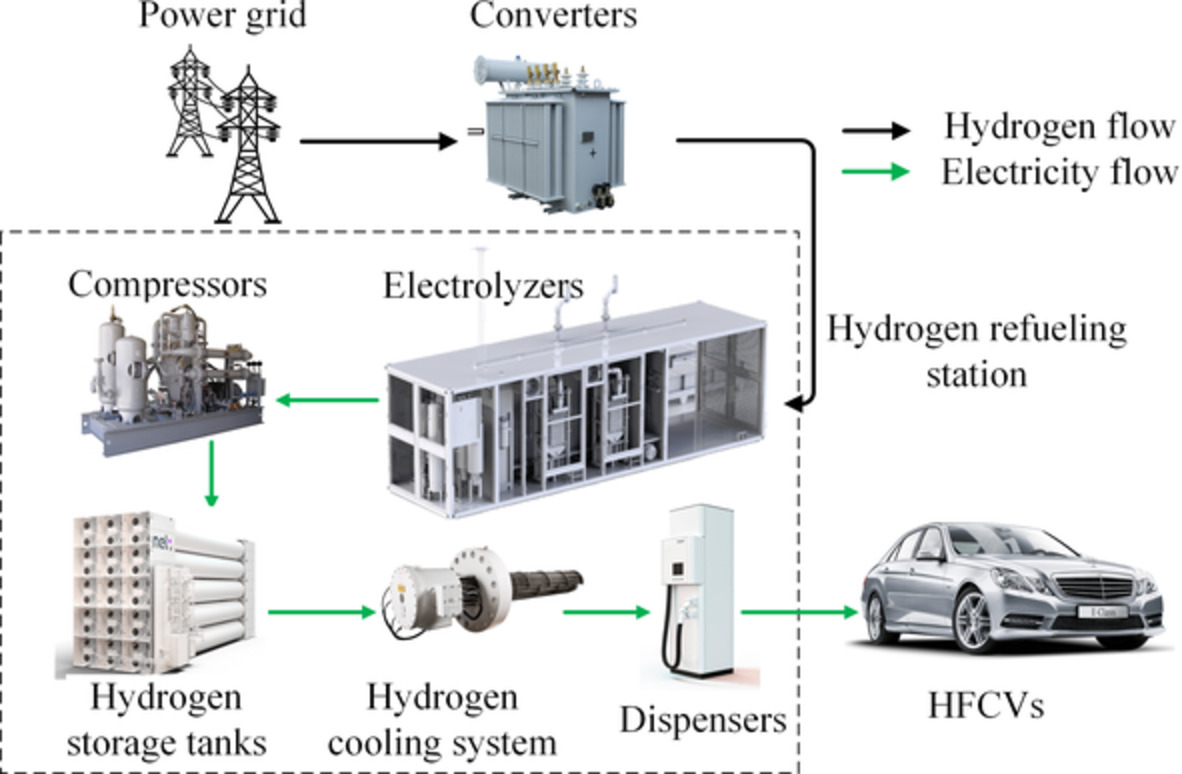
The power-traffic network is taken as an example to account for the proposed model. Four HRFSs are planned according to the robust model and the specification of electrolyzers, compressors and hydrogen storage tanks in each HRFS is obtained. Compared with the robust regret under deterministic hydrogen demand, the robust regret considering the 10% hydrogen demand fluctuation is reduced by 78.15%, which reveals that the solution of the proposed model is more in line with the decision-maker' psychological will.
Low temperature ionothermal synthesis of TiO2 nanomaterials for efficient photocatalytic H2 production, dye degradation and photoluminescence studies
- Pages: 8362-8371
- First Published: 25 May 2020
An equivalent circuit model of a deformed Li-ion battery with parameter identification
- Pages: 8372-8387
- First Published: 30 May 2020
Molybdenum carbide nanocrystals modified carbon nanofibers as electrocatalyst for enhancing polysulfides redox reactions in lithium-sulfur batteries
- Pages: 8388-8398
- First Published: 21 June 2020
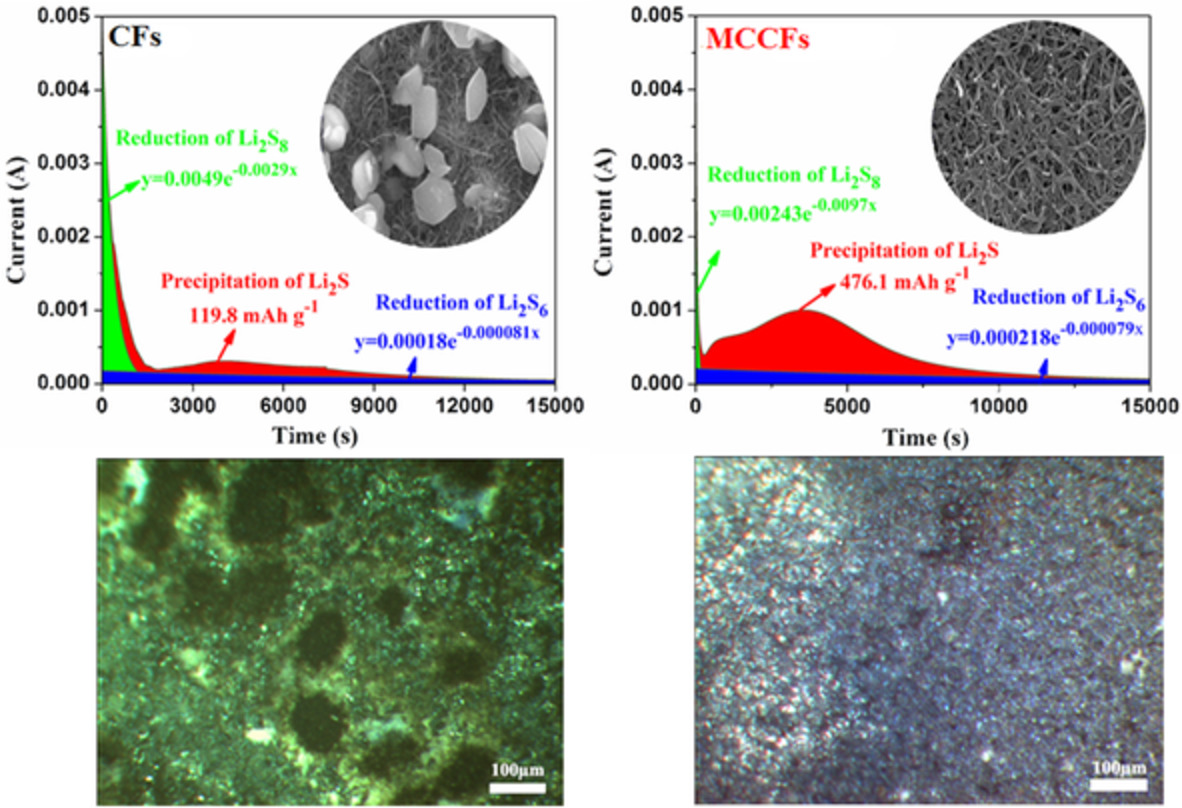
The freestanding MCCFs inhibited the dissolution of polysulfides shuttle effect and demonstrated as positive electrocatalyst for accelerating kinetic redox reaction of lithium polysulfides/sulfide. In addition, it ialso protects lithium anode and thus efficiently prevented further lithium metal corrosion and electrolyte depletion.
Optimization of the zinc oxide reduction in the charging process of zinc-air flow batteries
- Pages: 8399-8412
- First Published: 22 May 2020
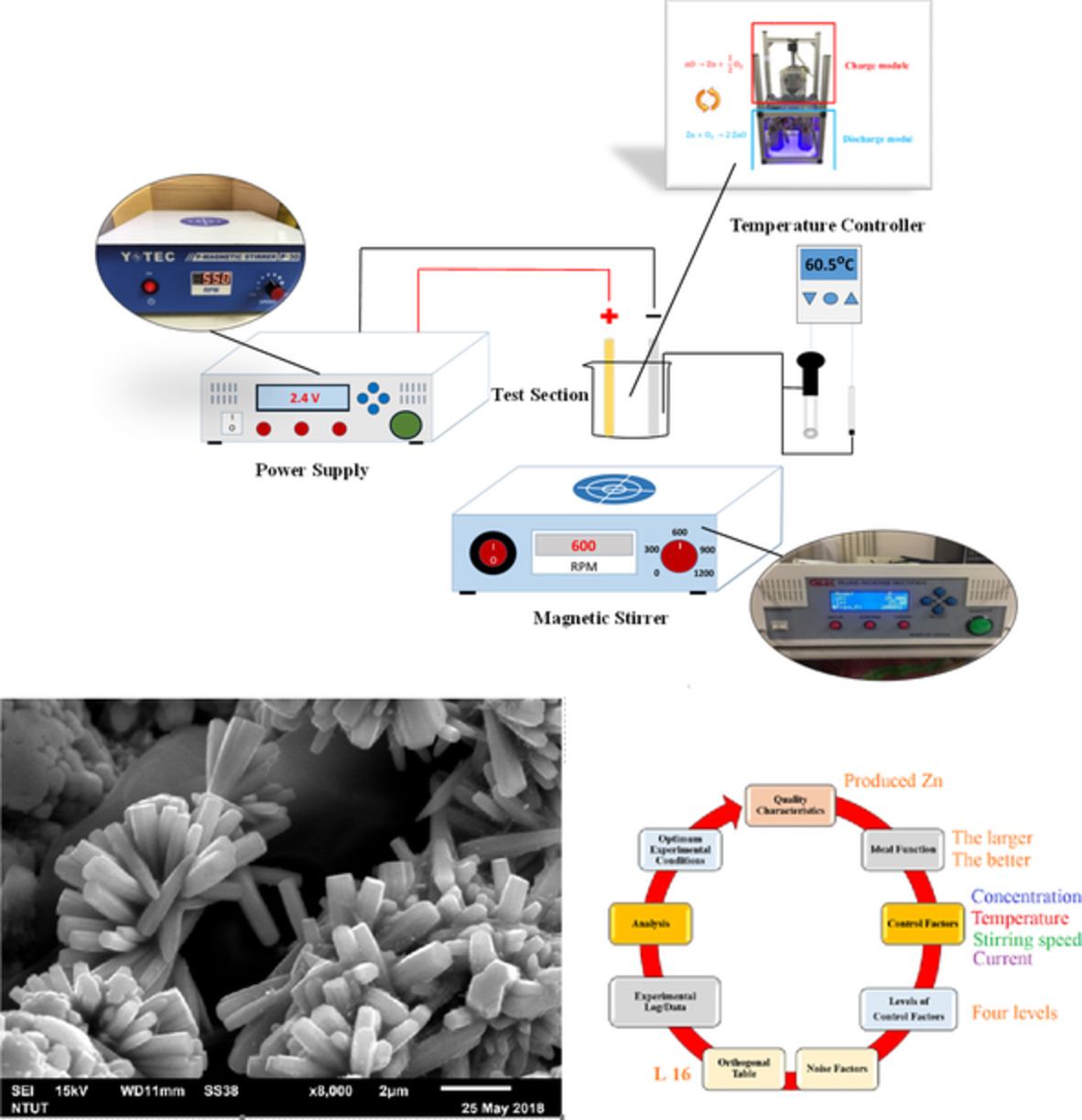
The zinc-air flow batteries are charging by reduction of zinc oxide, dissolved in the battery electrolyte through consuming electrical energy. The current work aims to optimize the reduction of zinc oxide subject to charging current, electrolyte concentration, stirring speed of the electrolyte, and electrolyte temperature. The Taguchi method is employed to maximize zinc production by optimizing the control parameters. The results reveal that an optimized set of the controlling parameters could improve the zinc production up to 6-fold compared to a badly tuned set of control parameters.
Highly durable carbon supported FeN nanocrystals feature as efficient bi-functional oxygen electrocatalyst
- Pages: 8413-8426
- First Published: 16 June 2020
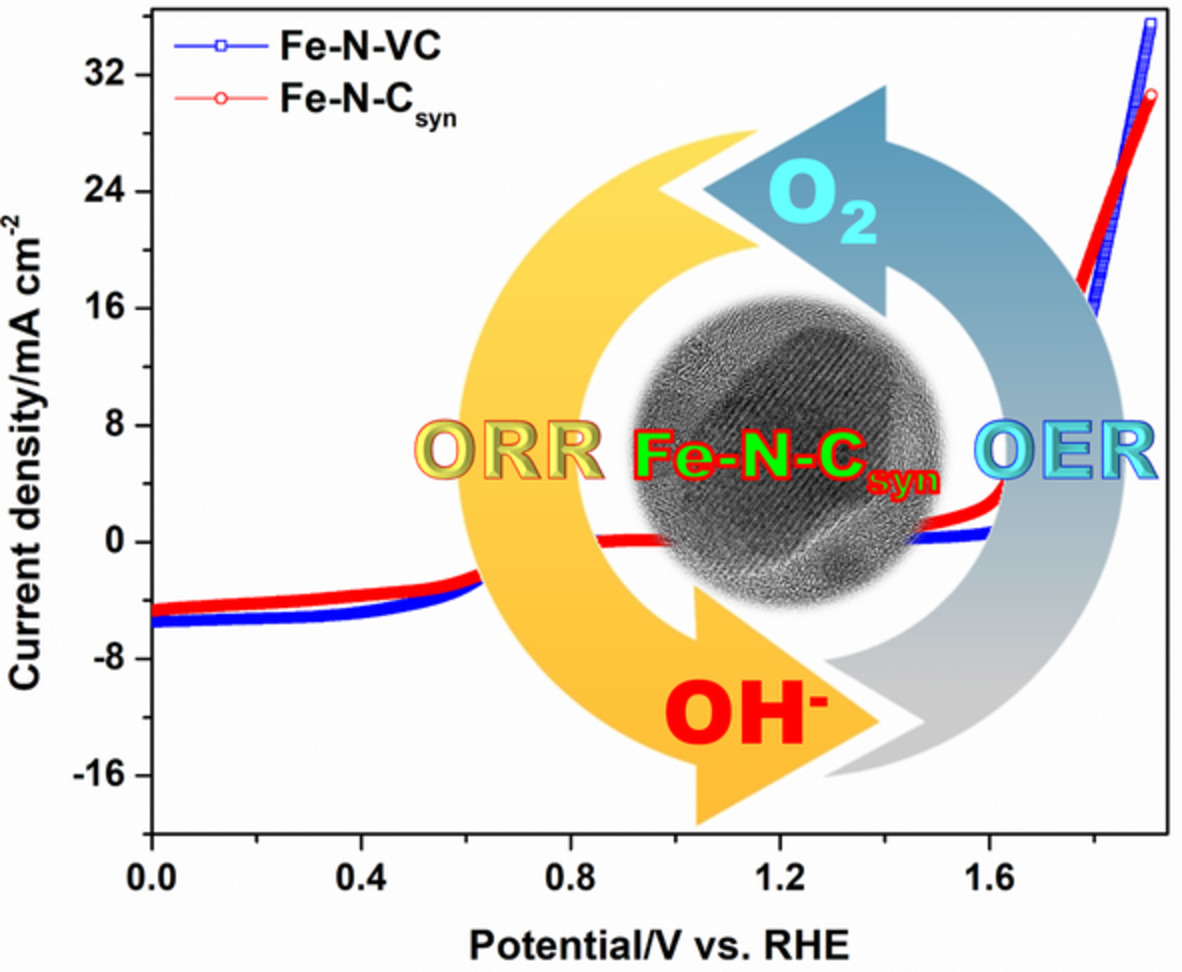
The mesoporous carbon encapsulated FeN nanocrystals (FeNCsyn) were successfully prepared through metal-complex formation followed by hydrothermal treatment. The FeN nanocrystals within the mesoporous graphitic carbon was clearly evidenced by the physicochemical characterizations. An improved electrocatalytic activity and durability for oxygen reduction reaction and oxygen evolution reaction confirms the bi-functional activity of FeNCsyn catalyst.
Optimal parameter estimation for PEMFC using modified monarch butterfly optimization
- Pages: 8427-8441
- First Published: 23 June 2020
Highly porous and thermally stable tribopositive hybrid bimetallic cryogel to boost up the performance of triboelectric nanogenerators
- Pages: 8442-8454
- First Published: 17 June 2020
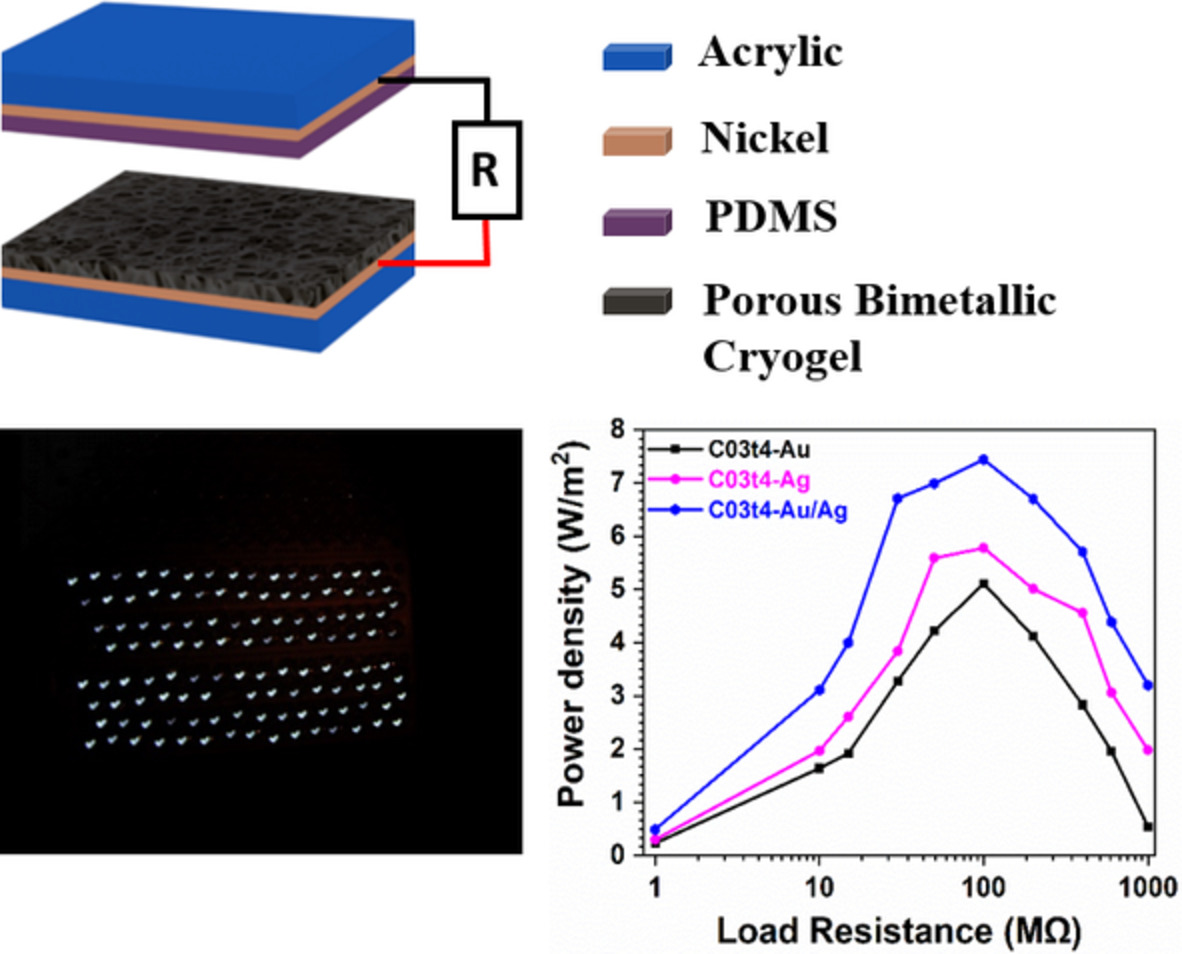
In this paper we investigated the effect of gold and silver nanoparticles inside the tribopositive porous cryogel for performance enhancement of TENG device. Silver nanoparticles have high contribution for performance enhancement as compared to gold. But with combination of both nanoparticles (Bimetallic cryogel) upon contact with tribonegative PDMS layer produces high power as compared to pure cryogel under the same external conditions.
Thermo-economic comparative analysis of solar-assisted and carbon capture integrated conventional cogeneration plant of power and process steam
- Pages: 8455-8479
- First Published: 03 June 2020
Thermal and electrical effects of basbars on Li-Ion batteries
- Pages: 8480-8491
- First Published: 20 June 2020
An optimization scheduling method of electric vehicle virtual energy storage to track planned output based on multiobjective optimization
- Pages: 8492-8512
- First Published: 02 June 2020
Development and optimization of artificial neural network algorithms for the prediction of building specific local temperature for HVAC control
- Pages: 8513-8531
- First Published: 04 June 2020

- The cloud based Smart Dual Fuel Switching System (SDFSS) of residential hybrid HVAC system of air-source heat pump (ASHP) and natural gas furnace/boiler for simultaneous reduction of energy cost and greenhouse gas emission was introduced.
- The developed black-box Artificial Neural Networks (ANN) are able to predict the local building specific location outdoor temperature and suitable for advanced predictive HVAC control.
- The proposed technique may lead to the onsite temperature sensors redundant and/or enhanced remote sensor fault detection capability.
Flux preparation of LiNi0.6Co0.2Mn0.2O2 micron-sized crystals as cathode materials for highly reversible lithium storage
- Pages: 8532-8541
- First Published: 20 June 2020
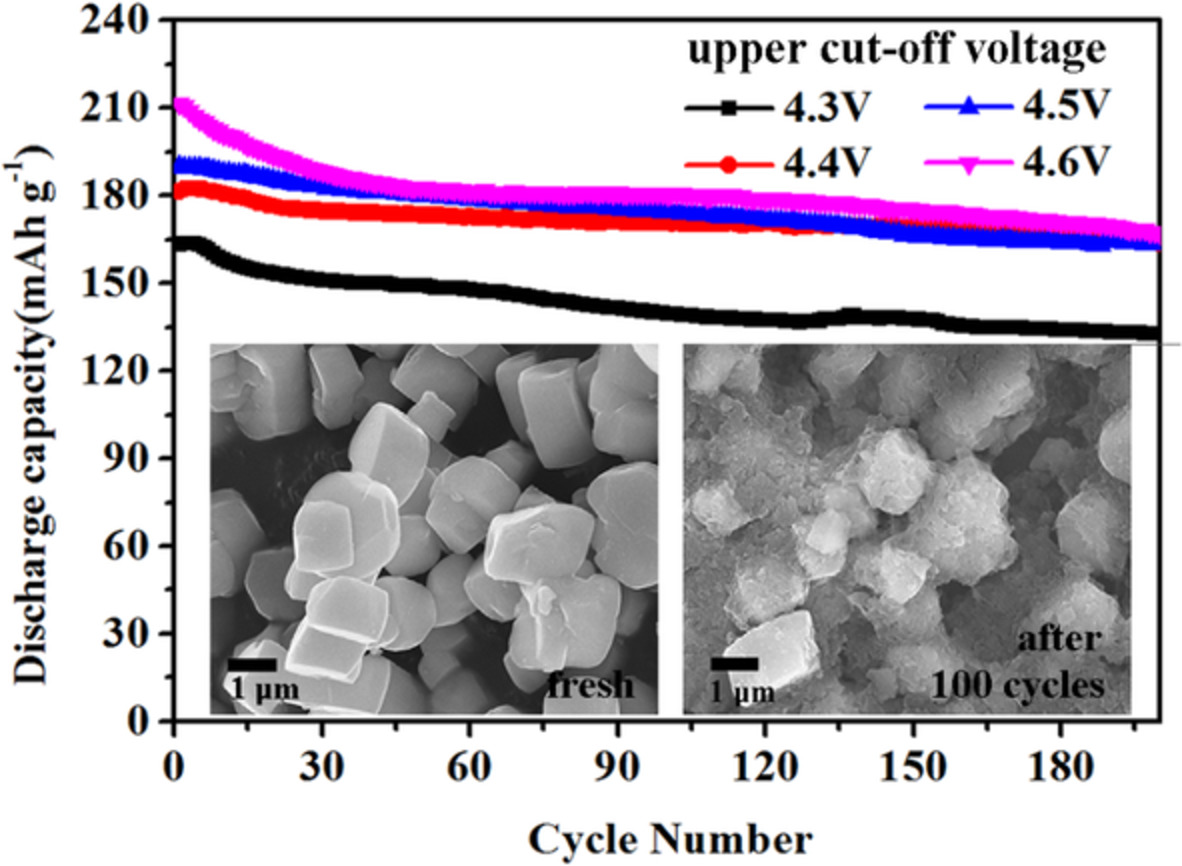
Under the upper cut-off voltage 4.3, 4.4, 4.5, and 4.6 V, M-NCM622 respectively delivers the initial capacities of 162.9, 181.3, 190.1, and 211.7 mAh g−1 and retains 81.3%, 90.1%, 81%, and 79% of their initial capacities after 200 cycles. The well-grown micron-sized single crystals (M-NCM622) to some extent withstand side reaction during higher voltage charging/discharging and present improved electrochemical performance.
A free-standing electrode based on 2D SnS2 nanoplates@3D carbon foam for high performance supercapacitors
- Pages: 8542-8554
- First Published: 13 June 2020
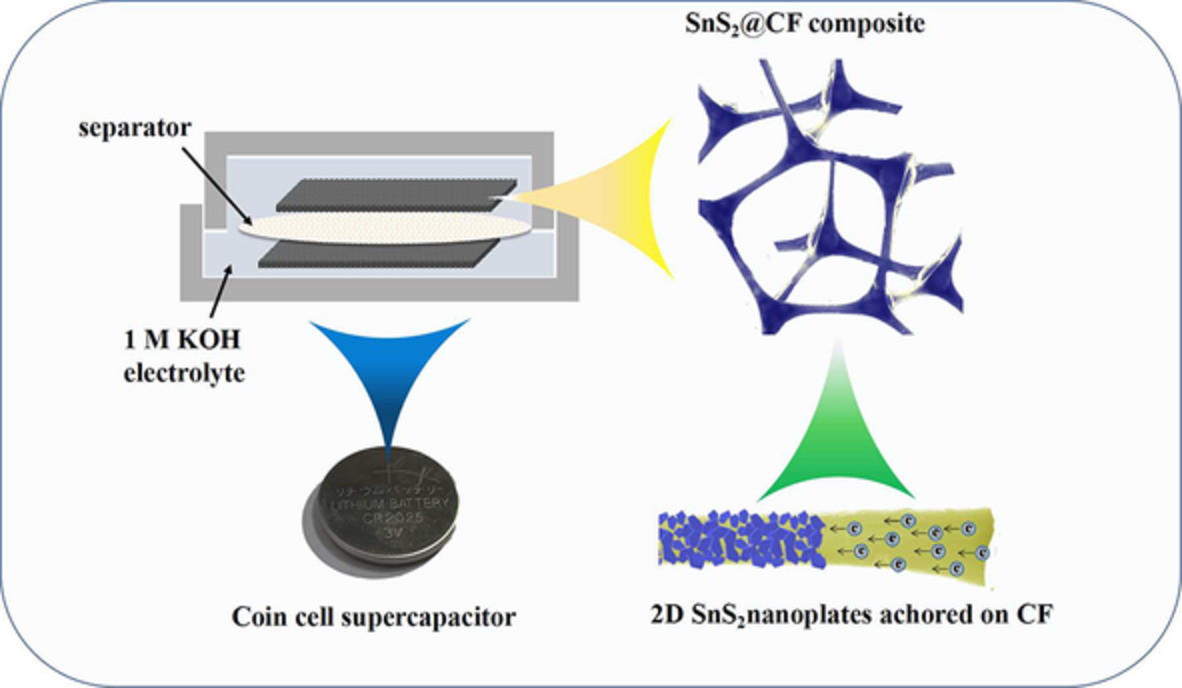
This research article entitled “A Free-Standing Electrode Based on 2D SnS2 Nanoplates@3D Carbon Foam for High Performance Supercapacitors” completed by Dongfeng Wang, Xuehua Yan*, Chen Zhou, Jingjing Wang, Xiaoxue Yuan, Hui Jiang, Yihan Zhu, Xiaonong Cheng and Ruifeng Li. No conflict of interest exits in the submission of this manuscript, and manuscript is approved by all authors for publication. I would like to declare on behalf of my co-authors that the work described was original research that has not been published previously, and not under consideration for publication elsewhere, in whole or in part. All the authors listed have approved the manuscript that is enclosed.
- SnS2 nanoplates were synthesized uniformly on free-standing carbon foam network.
- SnS2@CF composite shows 283.7 F g−1 at a current density of 1 A g−1.
- Assembled coin cell supercapacitor delivered a high energy density of 13.9 Wh kg−1.
Photo-to-thermal conversion and energy storage of lauric acid/expanded graphite composite phase change materials
- Pages: 8555-8566
- First Published: 13 June 2020
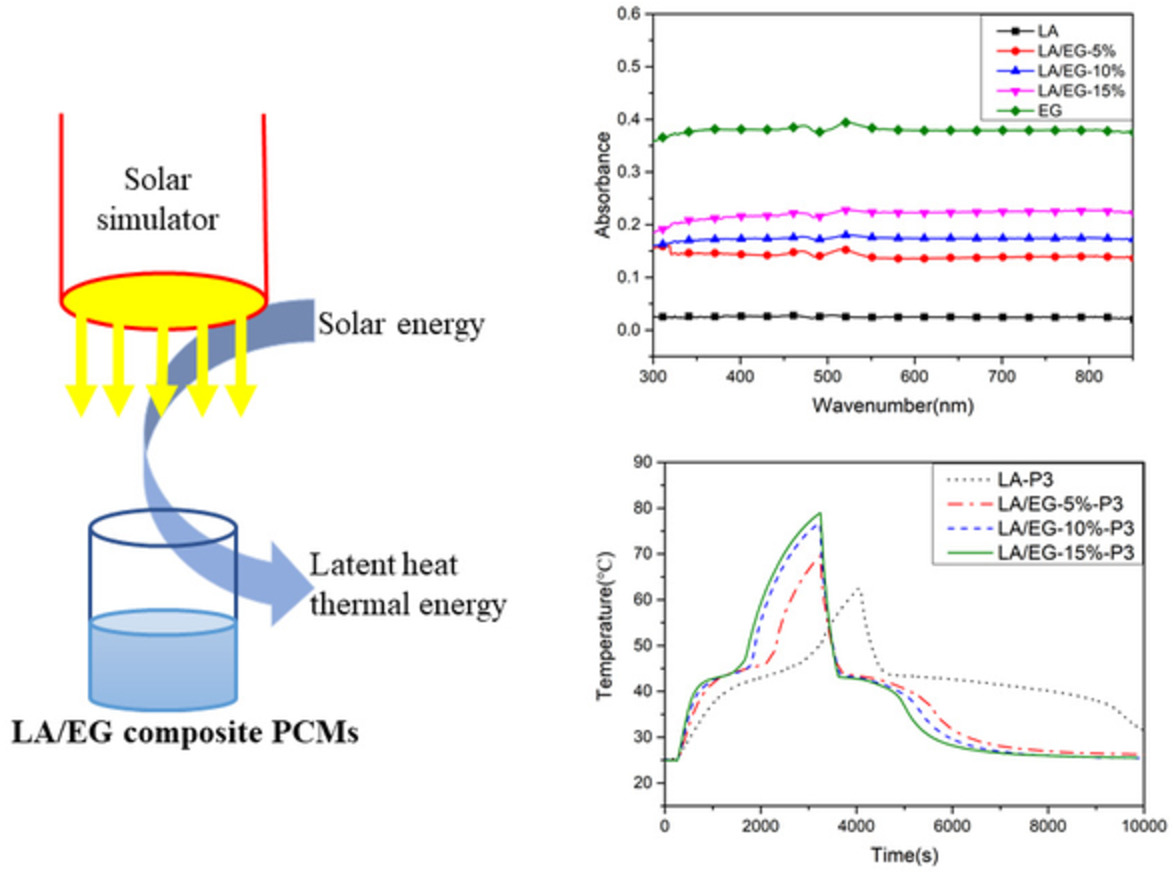
Lauric acid/expanded graphite (LA/EG) composite phase change materials (PCMs) were prepared to collect and store solar energy as latent heat thermal energy. Ultraviolet-visible spectra demonstrated that the ability of LA/EG composite PCMs to absorb Ultraviolet-visible light would increase as the mass fraction of EG increases. Photothermal conversion experiments proved that LA/EG composite PCMs have excellent photothermal conversion performance, and the process of photothermal conversion can be accelerated with more mass fraction of EG, larger illumination intensity or smaller heat transfer size. The UV-vis absorption spectrum and photothermal conversion curves of LA/EG composite PCMs.
Fabrication and characterization of electrospun fatty acid form-stable phase change materials in the presence of copper nanoparticles
- Pages: 8567-8577
- First Published: 22 June 2020
Experimental study on cogasification mechanisms of straw and kitchen waste in the fixed-bed gasifier
- Pages: 8578-8590
- First Published: 22 May 2020
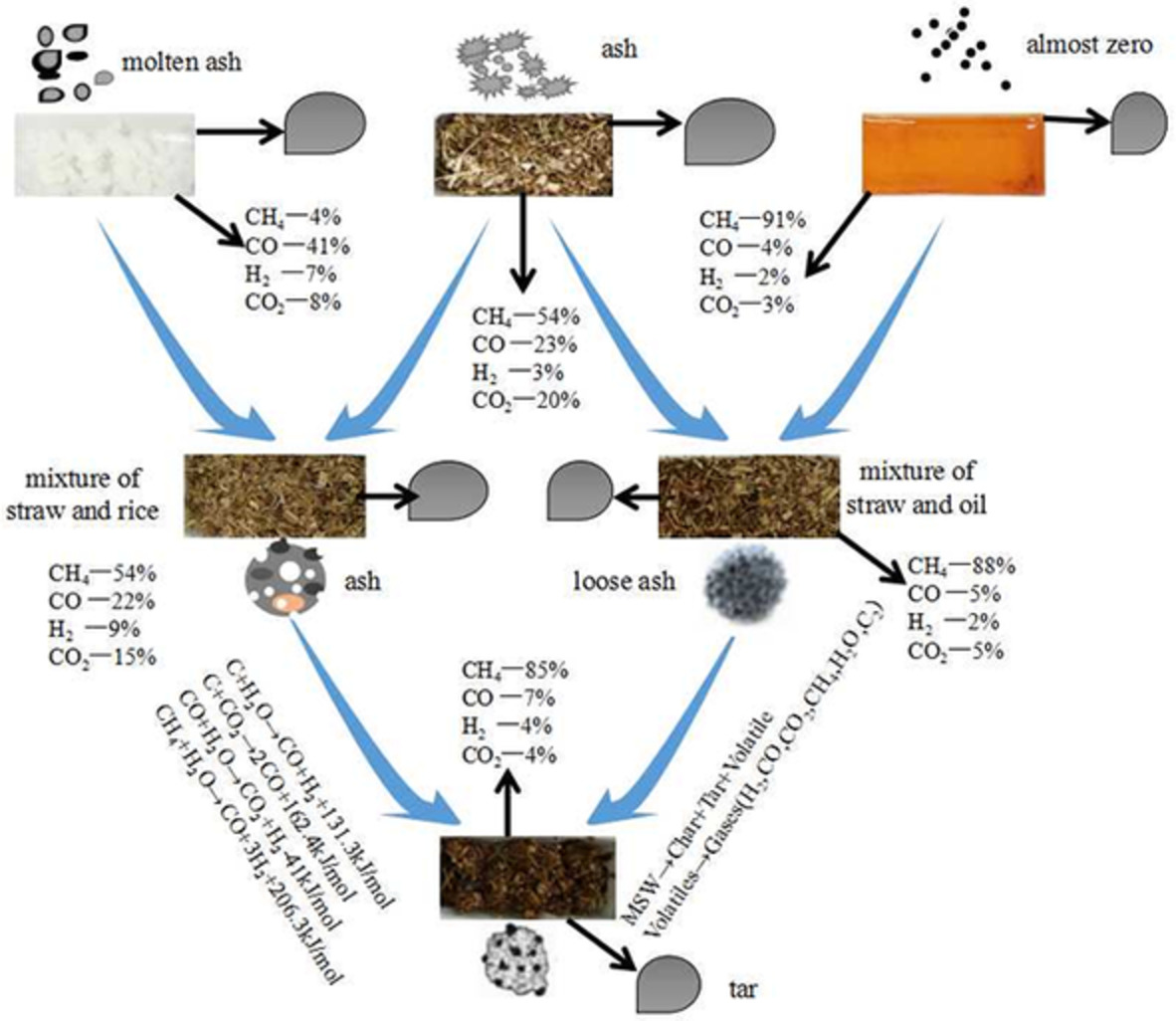
The co-gasification mechanisms of straw and kitchen waste were investigated by the electric heating reactor and the self-heating gasifier, and with the effects of temperature, equivalence ratio, as well as mixing ratio of straw and kitchen waste considered. The co-gasification could achieve much higher heat value than the weighting value from the single material gasification even without external heating, and the added kitchen waste into the straw increased the gasification temperature and promoted the breakage of functional groups.
Pinecone biomass-derived activated carbon: the potential electrode material for the development of symmetric and asymmetric supercapacitors
- Pages: 8591-8605
- First Published: 21 May 2020
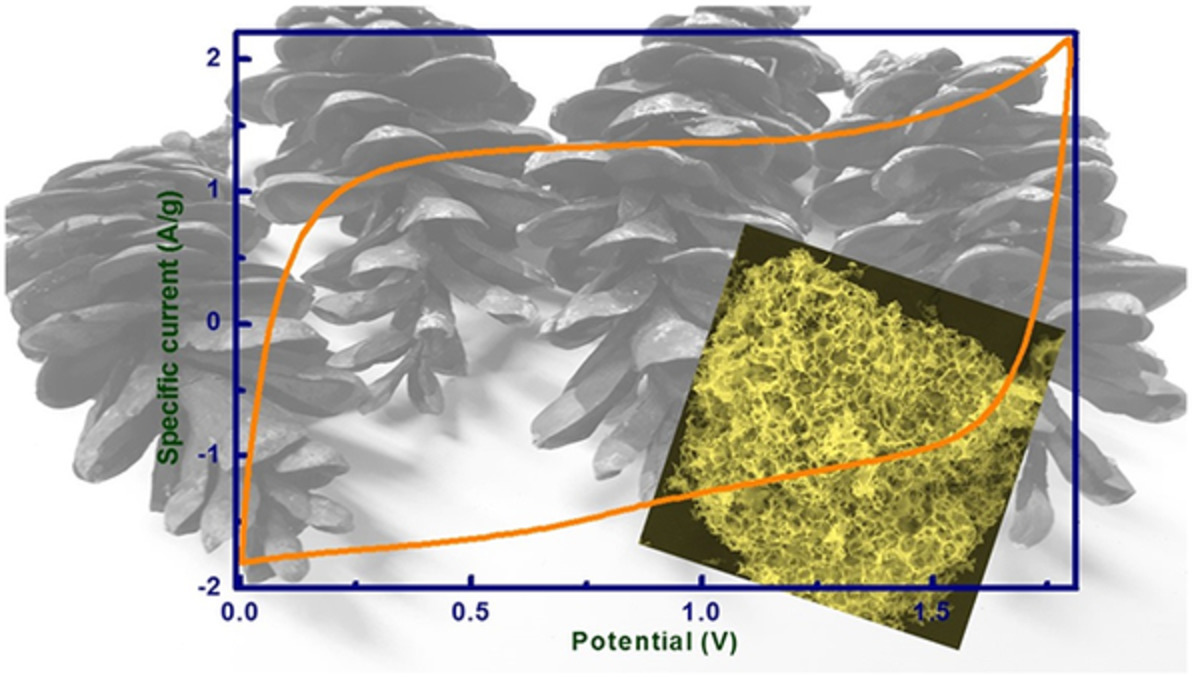
Activated carbons were synthesized from biomass using two different mass ratio of activation agent and the activated carbon showed excellent electrochemical performances. For the first time, an symmetric supercapacitor was designed, utilizing two different surface-natured activated carbon electrodes, and a hybrid supercapacitor was designed using conducting polymer PEDOT and biomass-activated carbon electrode.
Hierarchical nanostructured electrospun carbon fiber/NiCo2O4 composites as binder-free anodes for lithium-ion batteries
- Pages: 8606-8621
- First Published: 20 June 2020
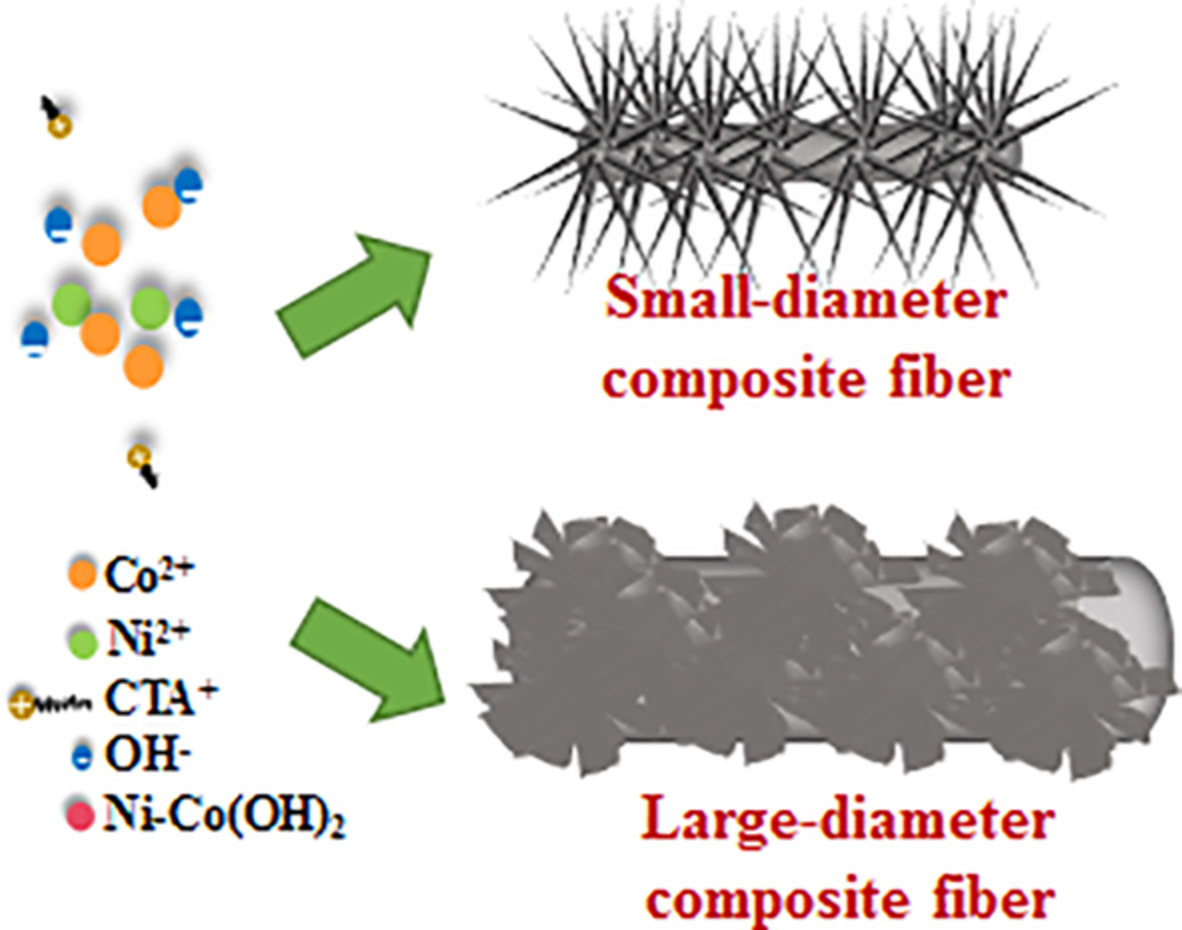
We investigated the changes in the microstructure and anode performance of NiCo2O4/electrospun carbon nanofiber composites with respect to fiber diameter. Small-diameter carbon fibers induced a one-dimensional growth of NiCo2O4 on the fiber surfaces, resulting in needle-like structures, whereas three-dimensional NiCo2O4 flowers were obtained when large-diameter carbon fibers were used to fabricate the composite. Our proposed method based on the manipulation of the morphology of the carbon nanofibers is cost-effective and easily controllable.
Mechanical degradation of proton exchange membrane during assembly and running processes in proton exchange membrane fuel cells with metallic bipolar plates
- Pages: 8622-8634
- First Published: 25 June 2020
Reinforcement learning for electricity dispatch in grids with high intermittent generation and energy storage systems: A case study for the Brazilian grid
- Pages: 8635-8653
- First Published: 02 June 2020
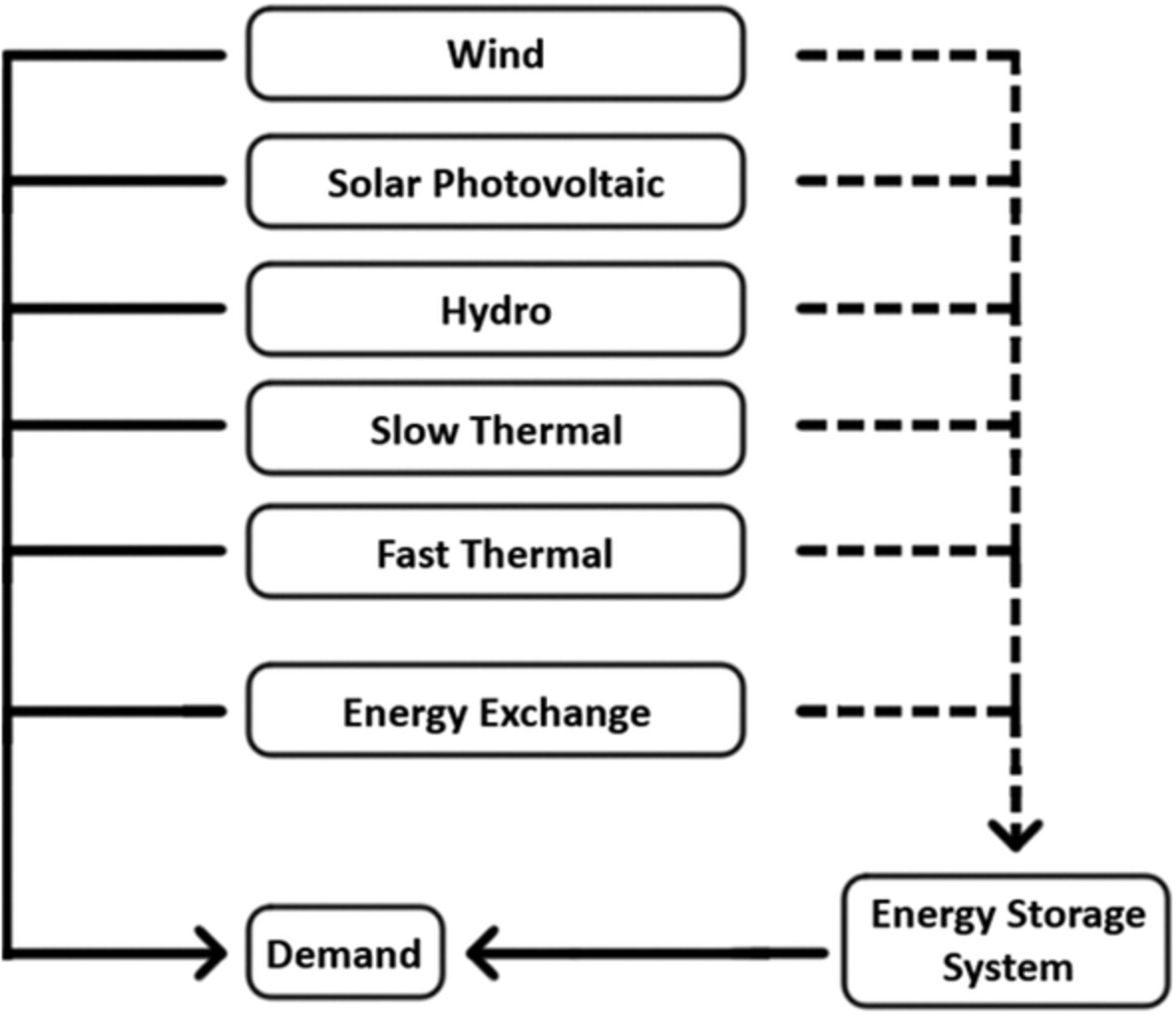
In this paper, we propose a novel technique for planning and for real-time operation of energy storage systems in an electricity grid with high participation of intermittent sources. The proposed methodology represents a major contribution to energy storage problems that have to be solved in a nonstationary setting (which is typical) in the presence of rolling forecasts. Moreover, the problem we address has real and important applications in the context of the Brazilian electricity sector.
High electrochemical performance of metal azolate framework-derived ZnO/Co3O4 for supercapacitors
- Pages: 8654-8665
- First Published: 09 June 2020
4.2 V Stack of metal oxide-polypyrrole-based composite electrodes and their power management
- Pages: 8666-8680
- First Published: 03 June 2020
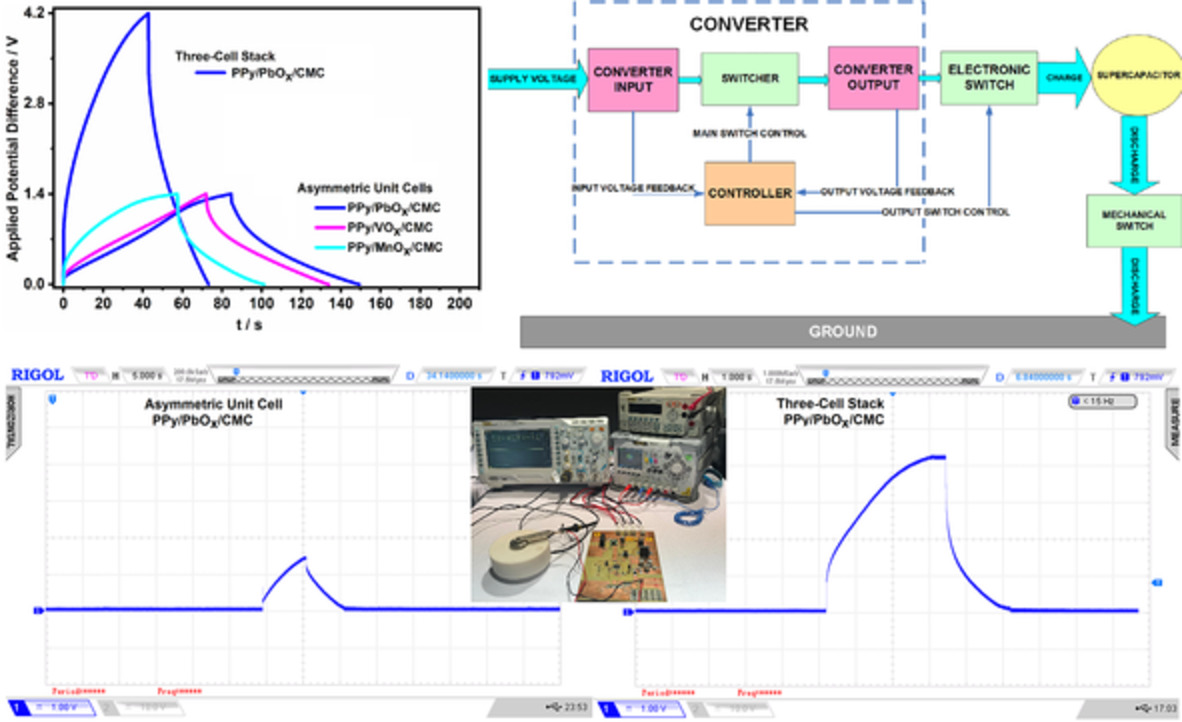
Polypyrrole-based composites containing nanostructured VOx, PbOx, and MnOx are synthesized on exfoliated graphite papers as supercapacitor electrodes. The three-cell asymmetric stack design, which is prepared using these composite-coated electrodes, achieves a Coulombic efficiency of 76% at 4.2 V. A DC/DC buck-boost converter is designed and implemented to manage the charge and discharge cycles of single-cell and bipolarly connected stack to operate the asymmetric supercapacitor arrays.
A novel wind turbine health condition monitoring method based on common features distribution adaptation
- Pages: 8681-8688
- First Published: 13 June 2020

Aimed at the difficulty of the wind turbine transmission system diagnosis under variable working conditions, a novel health condition monitoring method based on common features distribution adaptation is proposed. Experiment shows that the proposed method has better working performance than traditional fault diagnosis methods.
Oxidation of coarse aluminum in pressured water steam for energy applications
- Pages: 8689-8715
- First Published: 03 June 2020
Design and fabrication of novel interconnectors for solid oxide fuel cells via rubber pad forming
- Pages: 8716-8729
- First Published: 11 June 2020
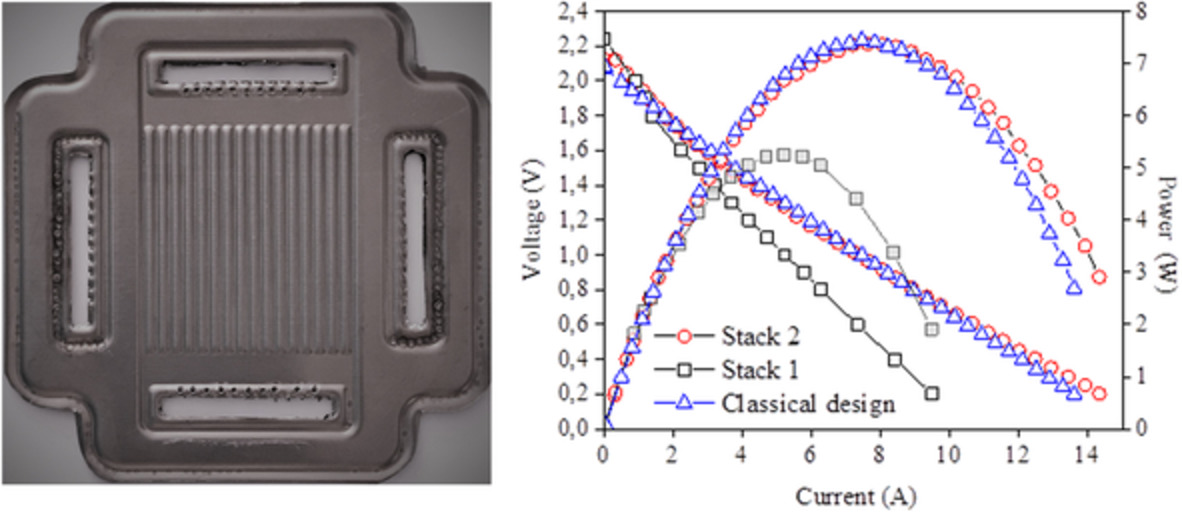
Rubber pad forming is used to fabricate interconnectors for solid oxide fuel cells (SOFCs) from thin sheets and successful fabrication is achieved by rubber pad forming, trimming, piercing and spot welding. Two-cell stack with rubber pad formed interconnector is built and the stack exhibits similar power to that of conventional stack. Thus, rubber pad forming is found to be effective for the fabrication of low-cost and compact SOFC stacks.
Investigation of solar cell degradation using electrochemical impedance spectroscopy
- Pages: 8730-8739
- First Published: 29 May 2020
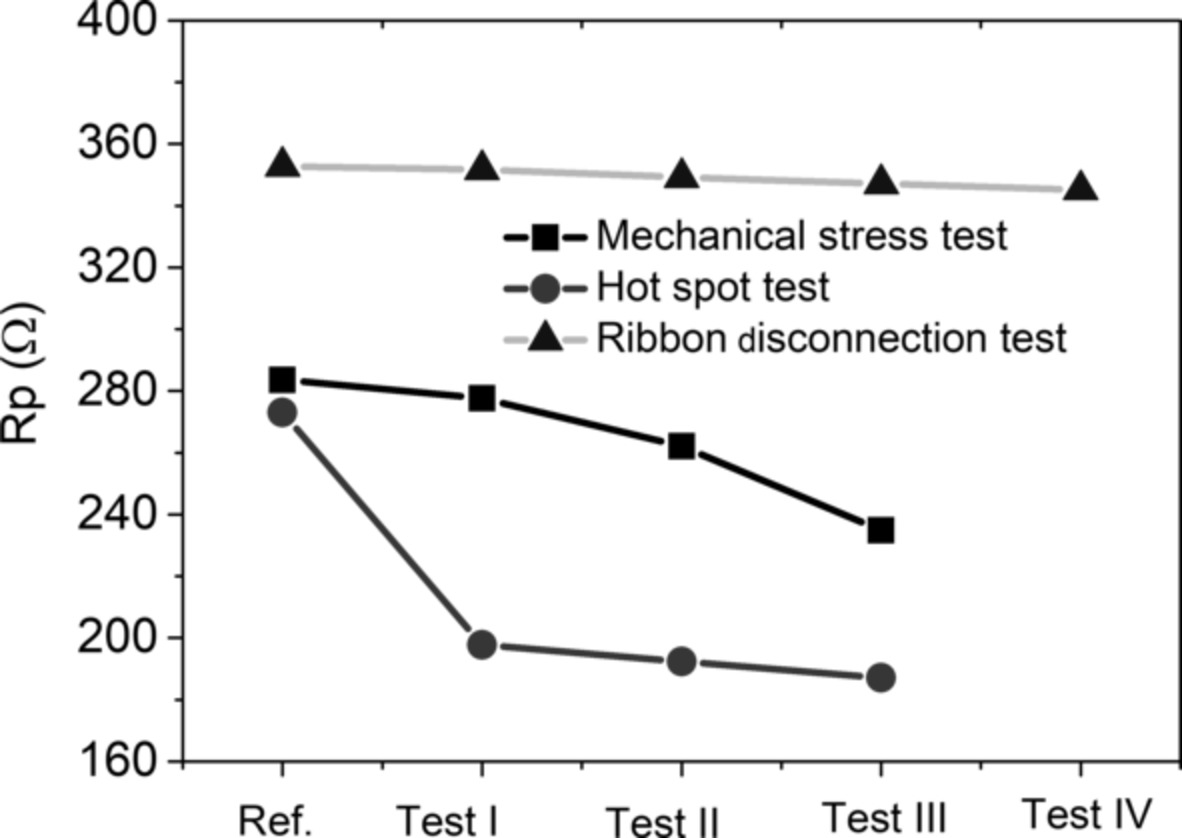
- Commercial solar cell is investigated under degradation conditions, and Nyquist plot and Fourier transform data are compared with I-V characteristic.
- Investigated effect of DC bias voltage on Randels circuit parameters.
- Shrinkage of Nyquist plot at lower frequency confirms decrease in Rp after degradation.
Variations in surface fractal characteristics of coal subjected to liquid CO2 phase change fracturing
- Pages: 8740-8753
- First Published: 01 June 2020
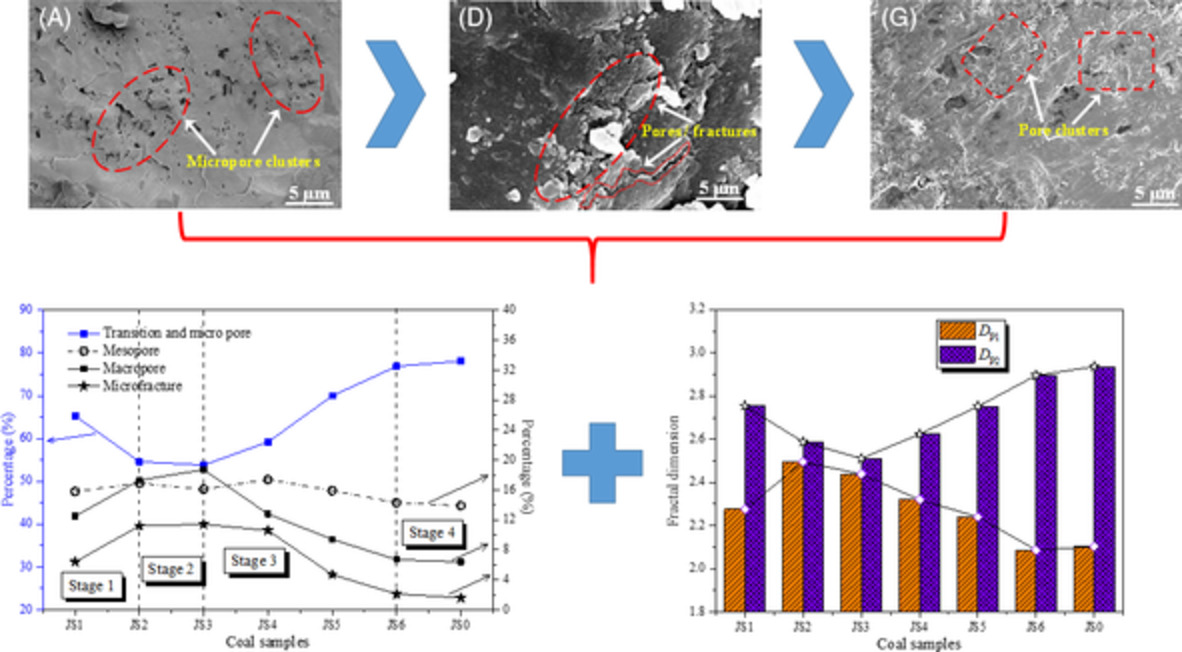
The impact of LCPCF on pore/ microfracture characteristics of coal is closely correlated with the distance from the fracturing borehole, and the best fracturing effect is observed at the distance of around 2.0 m. The effective influence scope of LCPCF on coal is within 7.0 m. The evolution of coal pore/fracture structure during LCPCF is attributed to the new pore/fracture generation and the conversion of original micropores into larger ones.
Application of modified Kalina cycle in biomass chp plants
- Pages: 8754-8768
- First Published: 04 June 2020
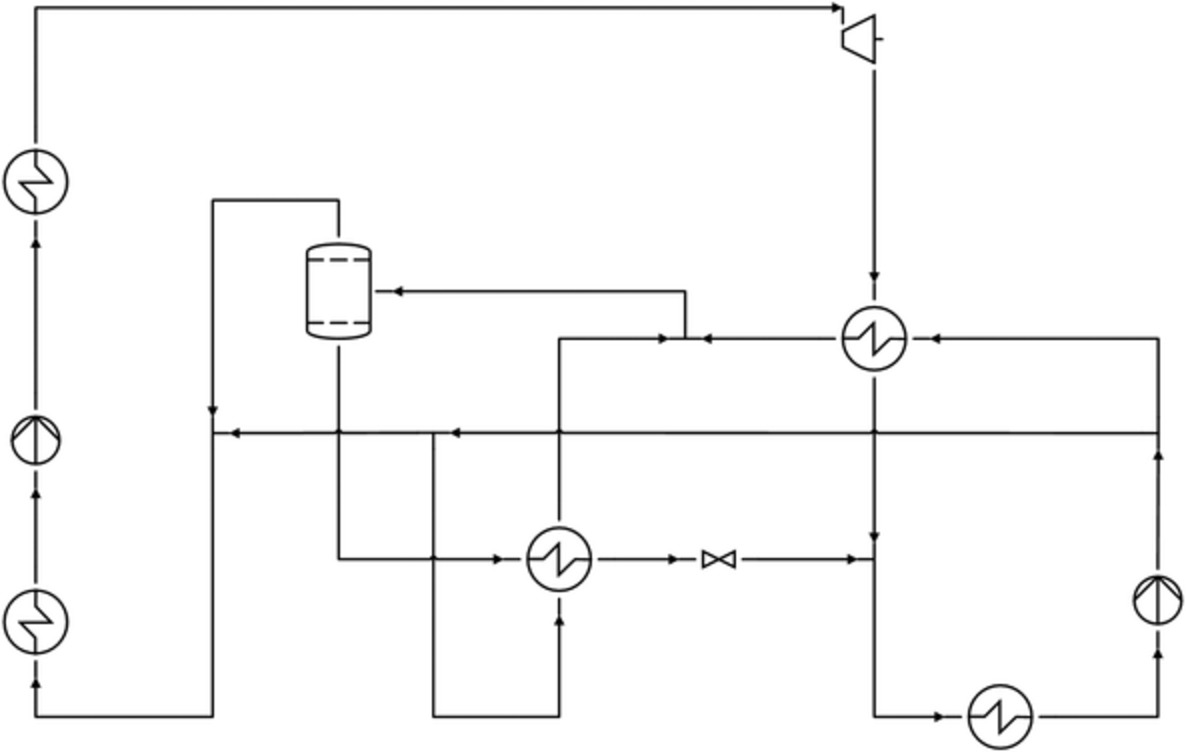
Paper presents three novel modified Kalina cycles which can be used in biomass power plants in alternative the organic Rankine cycle or original Kalina novel bottoming cycle. Analysis of ammonia-water binary system under various operating conditions has been performed for each of the three newly proposed cycles and it has been shown that the the proposed alternative models prove to both be simpler and have similar or even greater thermodynamic efficiency compared to the Kalina novel bottoming cycle.
In situ synthesis of star copolymers consisting of a polyhedral oligomeric silsesquioxane core and poly(2,5-benzimidazole) arms for high-temperature proton exchange membrane fuel cells
- Pages: 8769-8780
- First Published: 01 June 2020
Toward the practical application of direct CO2 hydrogenation technology for methanol production
- Pages: 8781-8798
- First Published: 09 June 2020
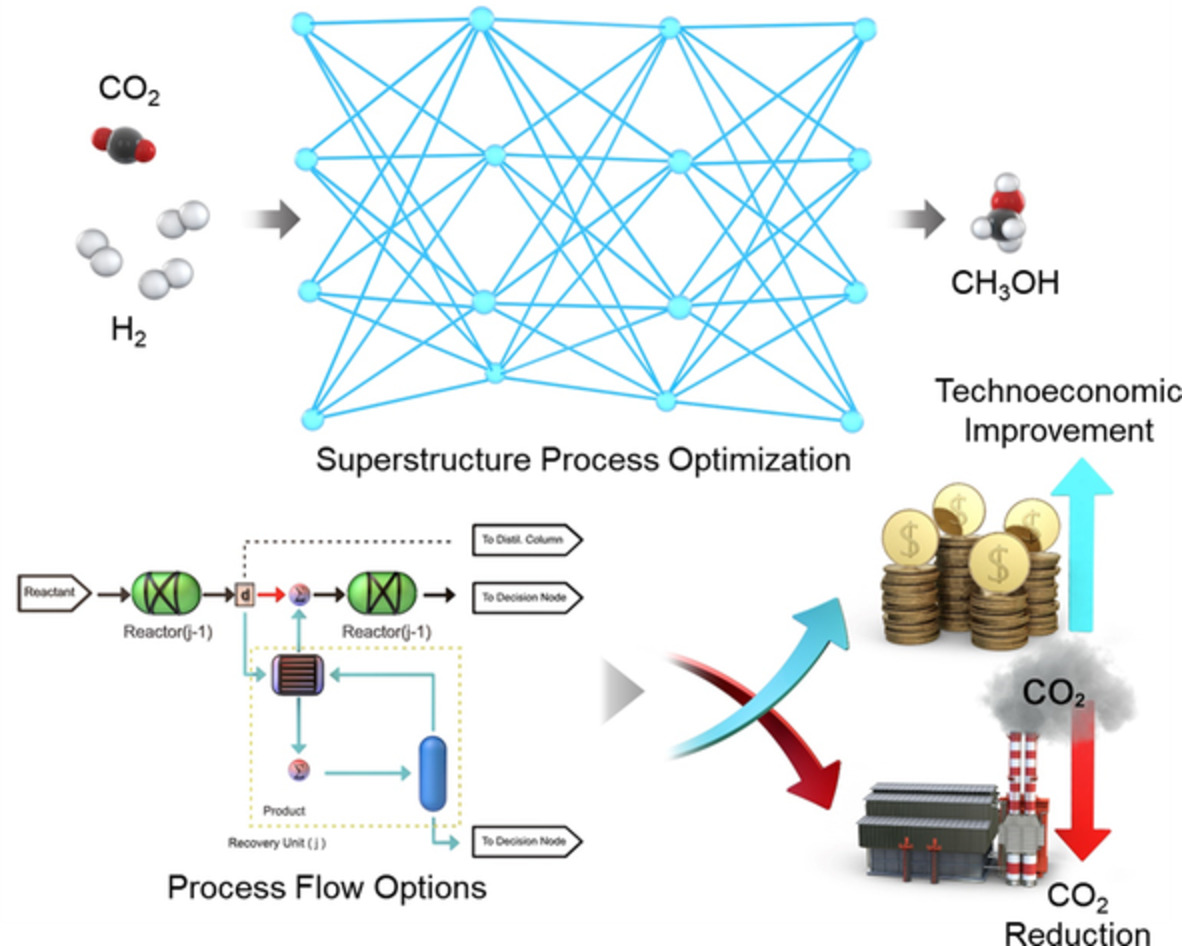
An economically attractive methanol production process that also works to sequester CO2, firstly developed through technoeconomic optimization. This economically optimized process design and the associated operating conditions were simultaneously obtained from among thousands of possible configurations using a superstructure optimization. The optimum process design involves a multistage reactor together with an interstage product recovery system and substantially improves the CO2 conversion to greater than 52%.
Assessing the impact of non-ideal optical factors on optimized solar dish collector system with mirror rearrangement
- Pages: 8799-8822
- First Published: 02 June 2020
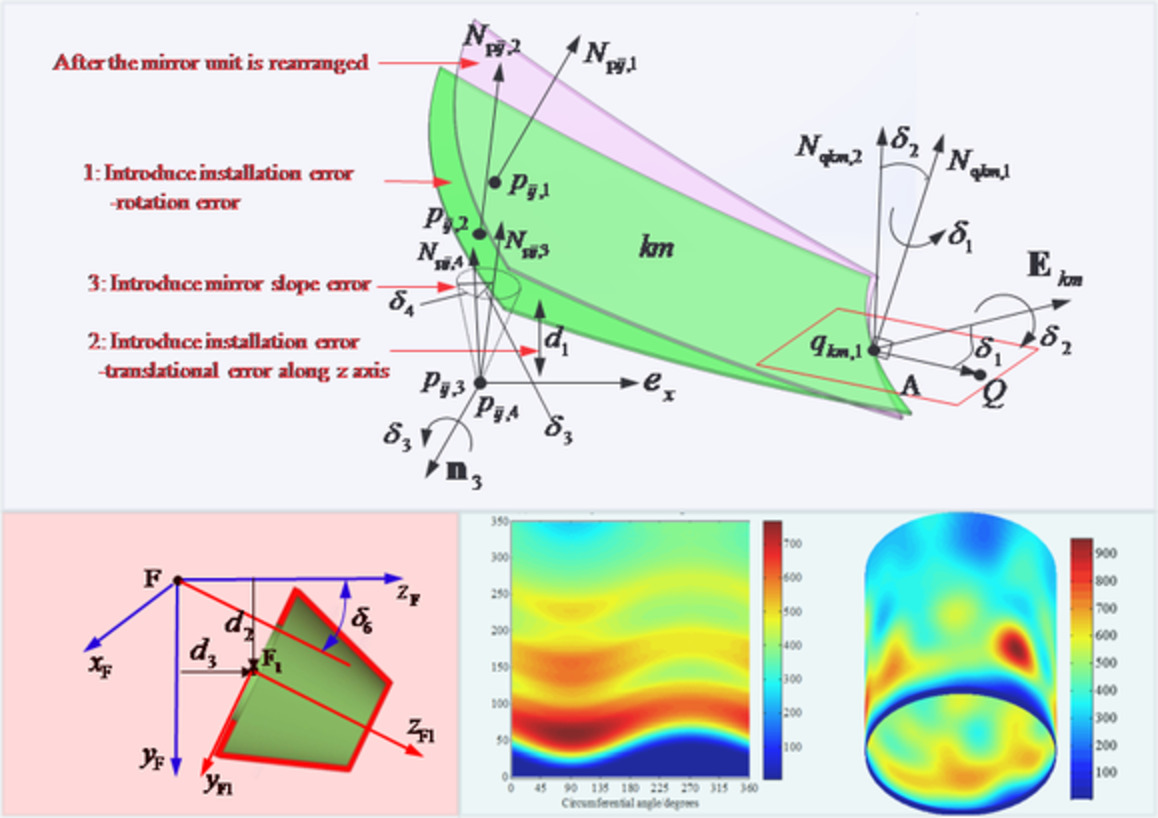
In this paper, the impacts of the non-ideal optical factors on the optical performance of an optimized solar dish collector (OPSDC) system with mirror rearrangement are studied in detail and compared with the conventional solar dish collector (COSDC) system. An optical model including the non-ideal optical factors is established based on the ray tracking method in detail, and the corresponding ray tracking code in C++ is developed and verified, which is used as an optical simulation tool to calculate the optical performance of COSDC and OPSDC system. The key finding is that the peak flux and non-uniform factor of the OPSDC system are obviously smaller than that of the COSDC system under the same optical error value, but it also has excellent optical efficiency and direct useful energy ratio. This means that the OPSDC system can effectively avoid the heat absorber from generating high-temperature hot spots, thus significantly improving its working reliability and service lifetime.
A novel method for measuring spatial uniformity of irregular boiling bubbles in a direct contact heat exchanger
- Pages: 8823-8840
- First Published: 23 June 2020
Producing water from saline streams using membrane distillation: Modeling and optimization using CFD and design expert
- Pages: 8841-8853
- First Published: 23 June 2020
Simulation analysis of the influence of internal surface morphology of mini-channel on battery thermal management
- Pages: 8854-8864
- First Published: 11 June 2020
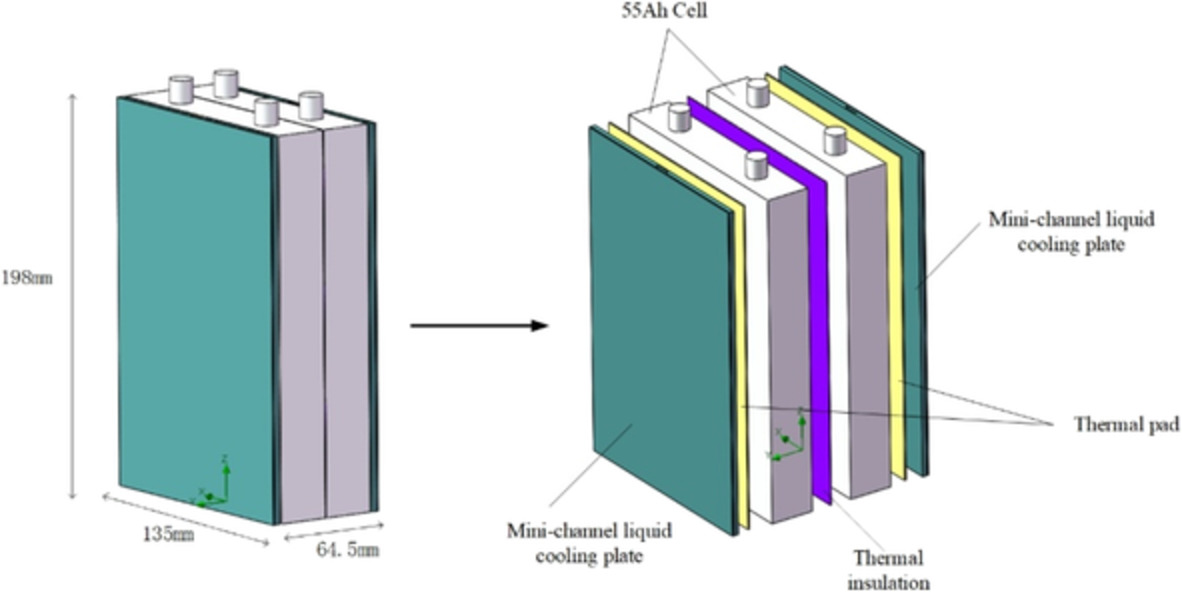
In this article, surface topography has been added in mini-channel liquid cooling plate, the influence of different shapes, different heights, different diameters, and different numbers of surface topography on the cooling effect of mini-channel liquid cooling plate were researched by using computational fluid dynamics method. This article revealed that the addition of surface topography in mini-channel can affect the flow trajectory of coolant and improve the cooling capacity of the cold plate.
The role of long-period stacking ordered phase on the discharge and electrochemical behaviors of magnesium anode Mg-Zn-Y for the primary Mg-air battery
- Pages: 8865-8876
- First Published: 09 June 2020
Vicious cycle during chemical degradation of sulfonated aromatic proton exchange membranes in the fuel cell application
- Pages: 8877-8891
- First Published: 23 June 2020

In this work, new insights into the microstructural evolution and decay in mechanical and thermal stability of SPEEK, as a representative of sulfonated aromatic PEMs, during chemical degradation are provided. H2 cross-over rate of degraded membranes was gradually increased and it was shown that chemical degradation leaves sulfonated aromatic PEMs in a vicious cycle.
A hierarchical hybrid of ZnCo2O4 and rGO as a significant electrocatalyst for methanol oxidation reaction: Synthesis, characterization, and electrocatalytic performance
- Pages: 8892-8903
- First Published: 23 June 2020
A stable and flexible carbon black/polyethyleneimine-bacterial cellulose photothermal membrane for high-efficiency solar vapor generation
- Pages: 8904-8918
- First Published: 09 June 2020
Three-dimensional layered electrochemical-thermal model for a lithium-ion pouch cell
- Pages: 8919-8935
- First Published: 21 June 2020
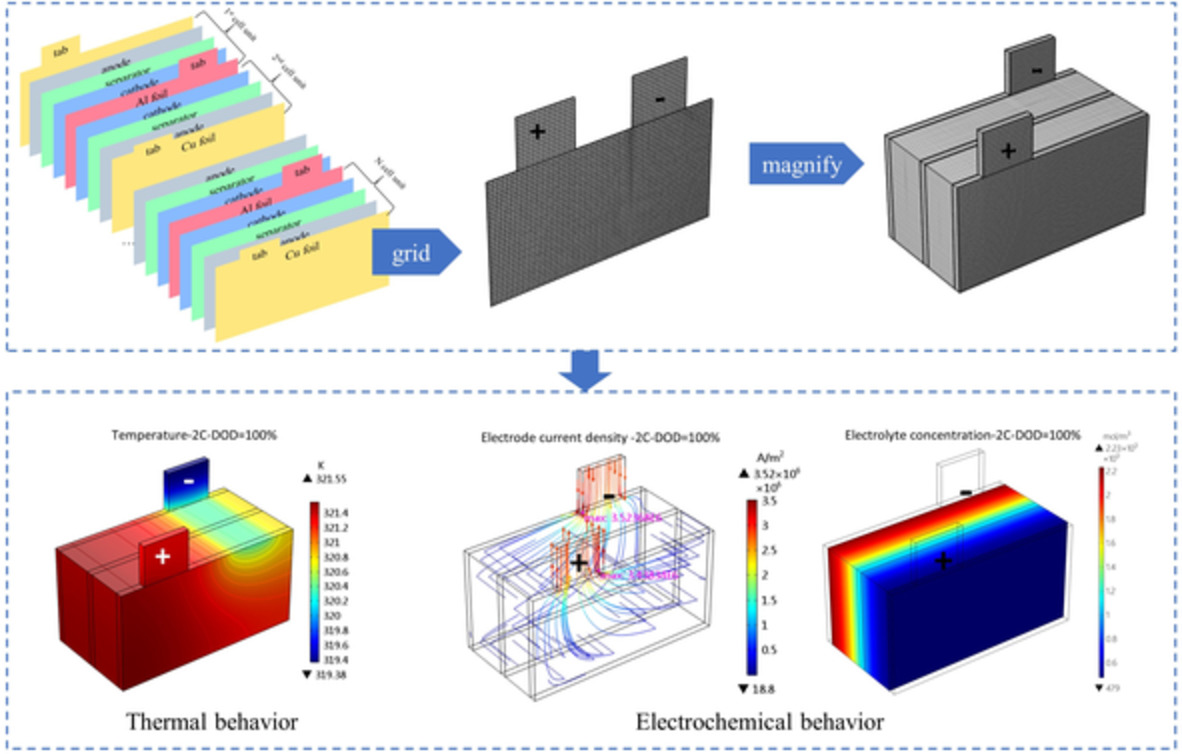
(1) A three-dimensional layered electrochemical-thermal model is proposed for a lithium-ion pouch cell.(2) A fitted surface equation is presented to predict the heat generation rate.(3) A large gradient in temperature, electrode potential, electrode current density, and lithium-ion concentration is located at the connection between tabs and electrodes.
Effect of CO2 atmosphere on biomass pyrolysis and in-line catalytic reforming
- Pages: 8936-8950
- First Published: 13 June 2020
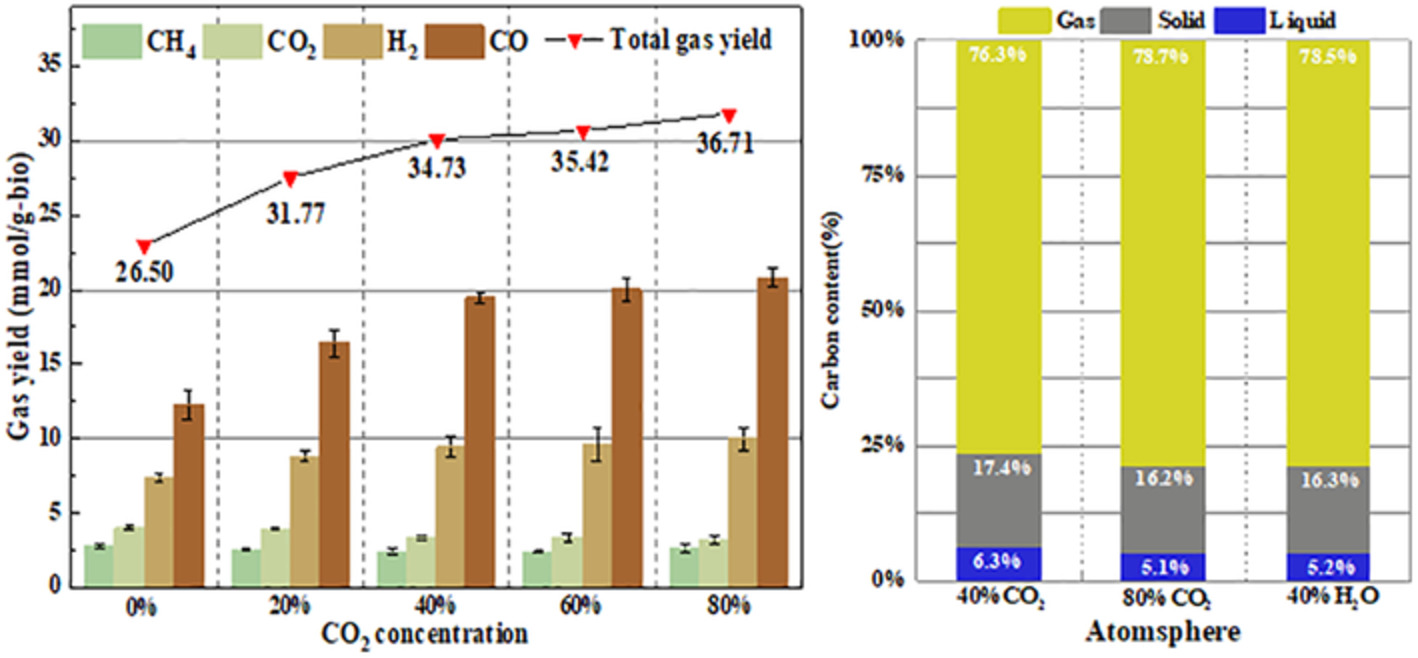
In-line catalytic CO2 reforming of biomass pyrolysis vapor was studied and compared to steam reforming. The gas yield rises with the increase of CO2 concentration and temperature. However, the increase of carbon conversion rate slows down when CO2 is more than 40 vol%. K-Ni/Al2O3 promotes H2 more effectively, but high temperature significantly increases CO. Effect of CO2 reforming on the decrease of liquid products is slightly less than that of steam reforming under the same CO2 and H2O concentrations.
Commercial TiO2 loaded with NiO for improving photocatalytic hydrоgen prоduction in the presence оf simulated solar radiation
- Pages: 8951-8963
- First Published: 24 June 2020
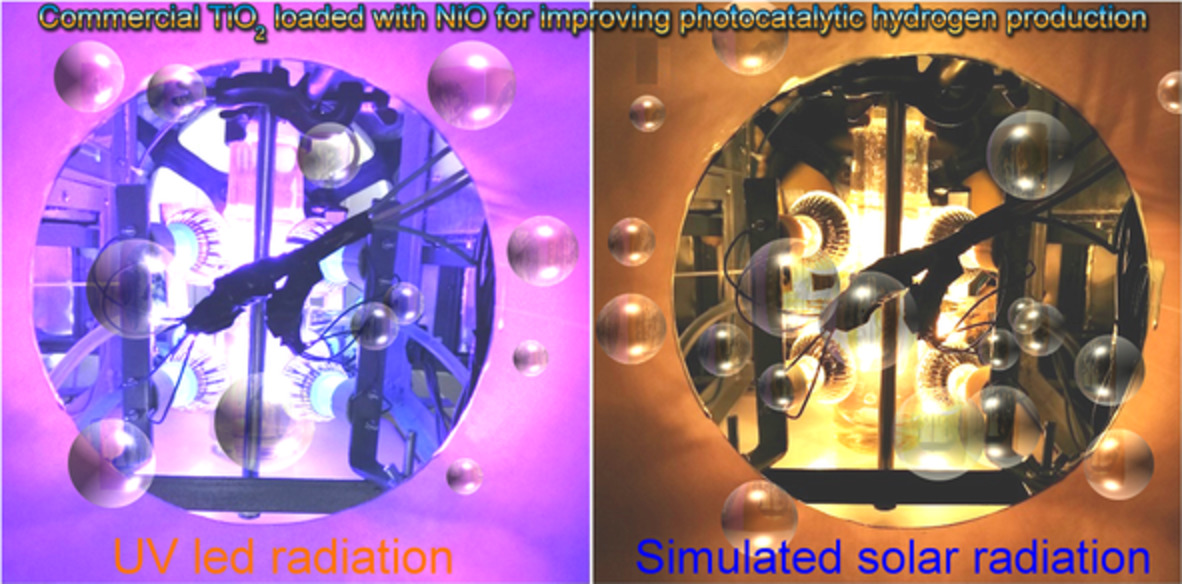
Two NiO/TiO2 photocatalysts with nominal NiO weight content of 3.3 and 6.7% (3NiO/TiO2 and 7NiO/TiO2) were prepared by the simple synthesis procedure and exhibited a higher hydrogen generation efficiency than the most commonly used TiO2 Degussa P25 under simulated solar radiation (SSR). For 7NiO/TiO2 photocatalyst, the hydrogen production rate was investigated under artificial UV radiation as well, and it was compared with that obtained under SSR. By applying SSR, 1.6 and 1.8 times greater hydrogen production rates were achieved.
Fuzzy modeling and particle swarm optimization for determining the optimal operating parameters to enhance the bio-methanol production from sugar cane bagasse
- Pages: 8964-8973
- First Published: 20 June 2020

Particle Swarm Optimization (PSO) algorithm is utilized to estimate the optimal values of the operating parameters that maximize the bio-methanol yield from sugar cane bagasse through pyrolysis.
Reaction temperature (°C), reaction time (min), and nitrogen flow (L/min) are used as the controlling parameters during the optimization process.
Based on the built model, the PSO optimizer accomplished a substantial improvement in the yield of bio-methanol by 20% compared to that obtained experimentally, without changing system design or the materials used.
Systematic development and application of a fuzzy logic equipped generic energy storage system for dynamic stability reinforcement
- Pages: 8974-8987
- First Published: 23 June 2020
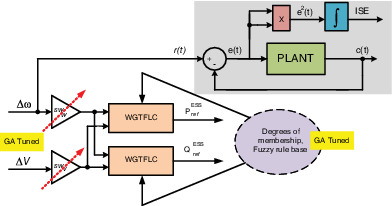
For any system, the fuzzy template is not unique. The idea of advocating fuzzy control technique is rooted in the distinct combinations in which the degrees of membership can coexist with the fuzzy rules. Although abstaining from using the prominent attribute of designer's knowledge methodology of a typical fuzzy logic system, a smart strategy of energy storage system control is described. This treatise lays stress on the role of weighted genetically tuned fuzzy logic control (WGTFLC) equipped flywheel energy storage system (FESS) and superconducting magnetic energy storage (SMES) units in manifestation of exogenous wind power intermittency as well as concentrated short circuits. The intelligent fuzzy-controller–based energy storage system generates reactive and real power support to reduce the divide between the actual and demanded power schedules promptly. Selecting a quadratic index of a mixed integral square error as the objective function, a coordinated approach is followed using mixed integer programming and evolutionary optimization to ascribe the reference reactive and real-power trajectories of a generic energy storage system. Although working with relatively local bus estimates as driving point parameters, the application of the proposed controller strategy is studied for a self-preserved power system model with accurate sets of differential algebraic equations. A perspective of a combination of FESS and SMES is traversed by approximating the inherent loop dynamics of the storages by a genetic algorithm-tuned first-order system. The role of the said storage devices in manifestation of exogenous wind power intermittency as well as concentrated short circuits is investigated. The dynamic behavior of the storages' dc link is also assimilated in the detailed energy storage modeling using cascaded conventional proportional-integral controllers. A wind farm integrated-reoriented form of an exemplar multibus network is adopted as the model system to authenticate the potency of the presented control strategy. The energy storage acts as a virtual alternator by imparting a reactive power support and voltage leveling as an elementary Volt-Var control device. The effect of WGTFLC-based GESS on the damping of frequency, rotor angles, power, and voltage excursions of the power system is ascertained.
Evaluation of Quaternized polyvinyl alcohol/graphene oxide-based membrane towards improving the performance of air-breathing passive direct methanol fuel cells
- Pages: 8988-9000
- First Published: 23 June 2020
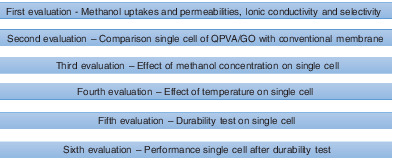
QPVA/GO nanocomposite membranes provide desirable properties such as low fuel uptake and permeability, excellent ionic conductivity, and cell performance, all of which are favourable for AEMs based on our previous works. The maximum power density of air-breathing passive DMFCs was achieved 27.2 mW cm−2 under the optimum condition of 2M methanol + 4 M KOH at 70°C. This article is the first to optimize and highlight the performance air-breathing passive DMFCs by using a QPVA-based membrane.
Multi-objective optimization of solid oxide fuel cell/gas turbine combined heat and power system: A comparison between particle swarm and genetic algorithms
- Pages: 9001-9020
- First Published: 23 June 2020
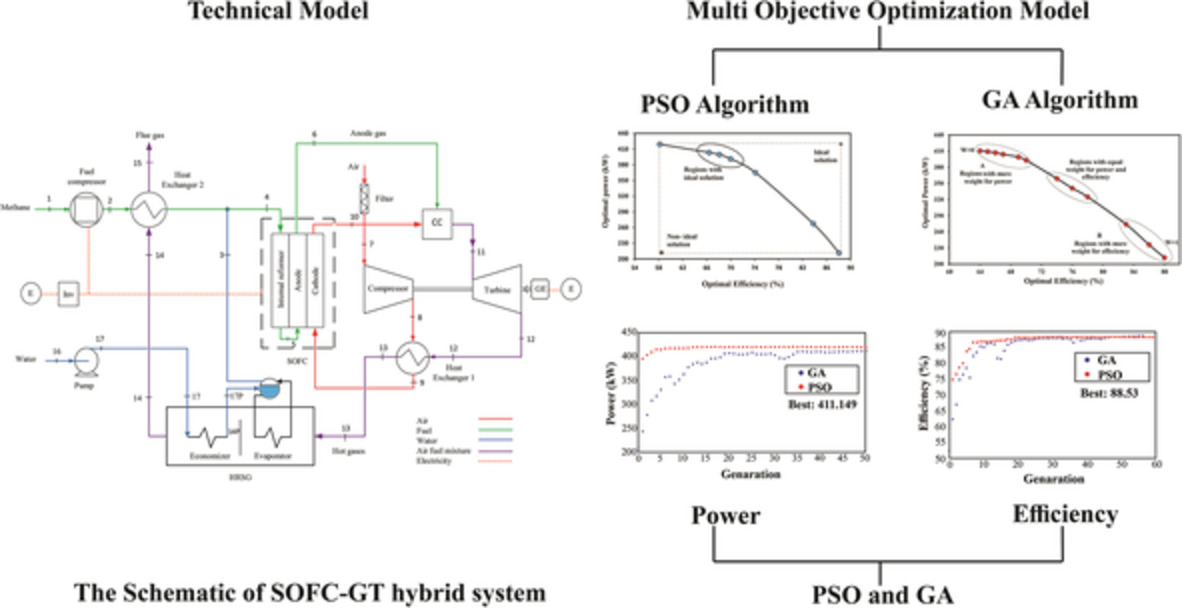
In this work, two different Multi-Objective Optimization algorithms (PSO and GA) are employed to approach the optimal design of SOFC-GT. The emphasis is placed on the evaluation of the proposed algorithm performance on two particular objectives (electrical efficiency and output power) of the designed layout. Since all prevailing factors have not been studied by other works, it is necessary to apply MOO on SOFC-GT. The considerable achievements are set of optimal points that target to identify the system optimal performance.
Mathematical modeling of batch bioethanol generation from carob extract in the suspended-cell stirred-tank bioreactor
- Pages: 9021-9034
- First Published: 21 June 2020

This is the first report on modeling of ethanol fermentation in the suspended-cell stirred-tank bioreactor with carob extract-based medium. The model Stannard successfully predicted the experimental biomass production, ethanol production, and substrate consumption data. The experimental kinetic parameters were in good aggrement with their estimated values. Besides, the model Stannard adequately validated the independent set of the experimental data.
Ab initio study for the structural, electronic, magnetic, optical, and thermoelectric properties of K2OsX6 (X = Cl, Br) compounds
- Pages: 9035-9049
- First Published: 17 June 2020
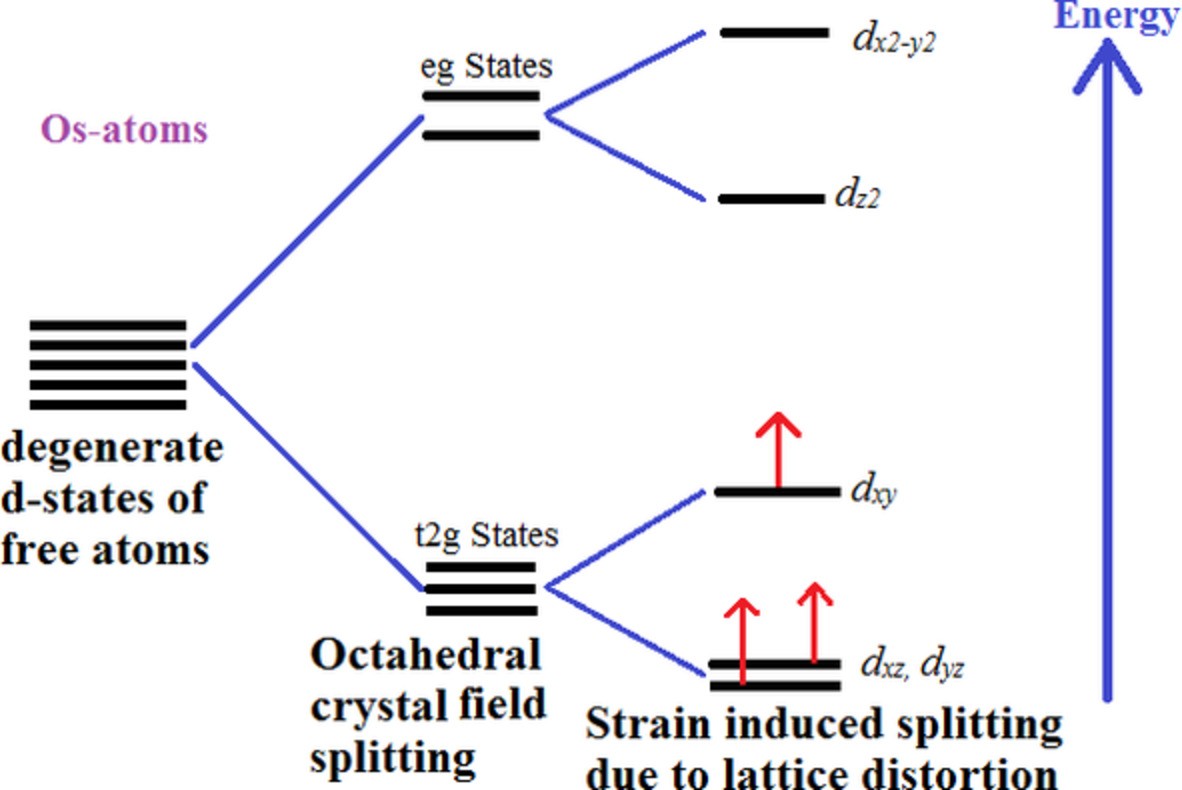
Spintronics is basically different from conventional electronics, where besides the state of charge, the spin channels of electrons are also used as additional degree of freedom for efficiency of data transfer and storage. However, presently, the major problem is that the spin-based polarizability is insufficient for insertion into semiconductors, which makes it an important aspect of research to find out high spin-polarized materials. Therefore, inorganic cubic perovskite-related K2PtCl6 type materials, K2OsX6 (X = Cl, Br), were investigated for the stated purpose. These materials were found as half metallic ferromagnets, having excellent optical and thermoelectric properties.
Mechanism and influence factor analysis of heat transfer deterioration of transcritical methane
- Pages: 9050-9063
- First Published: 23 June 2020
Effect of hybrid nanofluids mixture ratio on the performance of a photovoltaic thermal collector
- Pages: 9064-9081
- First Published: 23 June 2020

This research presents the first investigation into the effects of a hybrid nanofluid mixture ratio on the thermal and electrical performance of the PV/T system. This investigation is important because by understanding this behavior, the overall efficiency of the PV/T system can be improved without increasing the volume concentration of the hybrid nanofluid. Therefore allowing for some savings in material costs.
LiNi1/3Mn1/3Co1/3O2 with morphology optimized for novel concept of 3D Li accumulator
- Pages: 9082-9092
- First Published: 24 June 2020
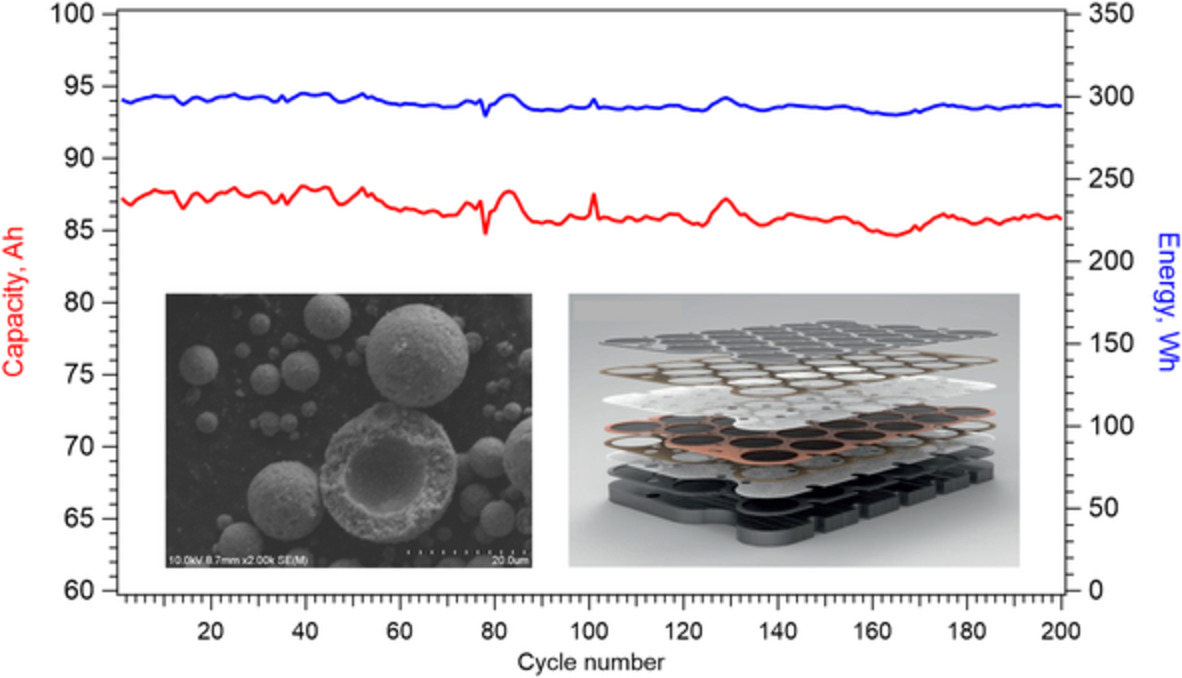
LiNi1/3Mn1/3Co1/3O2 with hollow-sphere morphology and 100% crystallinity made by novel synthesis provided in thin-film electrode arrangement charge capacity of 151 mAh g−1 and excellent galvanostatic cycling stability over 50 cycles at 1C rate. The 122 Ah /451 Wh 3D battery module containing this NMC material provides 78% of theoretical capacity and 73% of theoretical energy after 10 formatting cycles and exhibits stable performance over more than 200 cycles at C/10 rate.
One-step electrochemical preparation of ternary phthalocyanine/acid-activated multiwalled carbon nanotube/polypyrrole-based electrodes and their supercapacitor applications
- Pages: 9093-9111
- First Published: 21 June 2020
Study on the non-in situ measurement method for hydrate thermal conductivity
- Pages: 9112-9126
- First Published: 23 June 2020
Techno-economic assessment on the fuel flexibility of a commercial scale combined cycle gas turbine integrated with a CO2 capture plant
- Pages: 9127-9140
- First Published: 25 June 2020
In-situ heat generation measurement of the anode and cathode in a single-layer lithium ion battery cell
- Pages: 9141-9148
- First Published: 09 June 2020
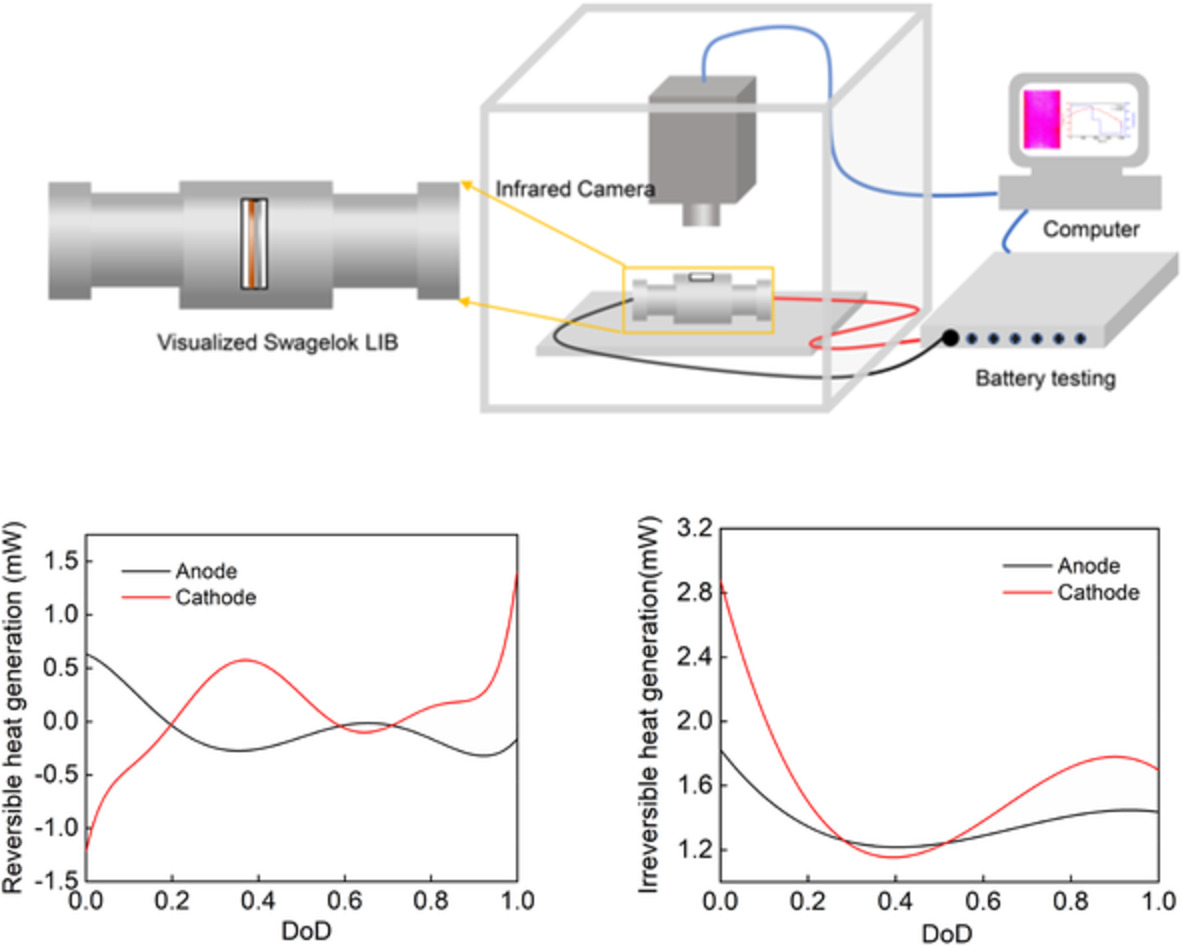
A novel in situ non-destructive temperature measurement method is developed to obtain the local heat generation of the anode and cathode. A Swagelok Li-ion battery cell is designed to visualize the temperature of the anode and cathode by using an infrared camera. The reversible heat generation of the electrode has an exothermic effect, and this could turn into an endothermic effect within 0% to 100% DoD. The irreversible heat generation always has an exothermic effect, decreasing during the delithiation process.
Enhanced thermoelectric properties of PEDOT:PSS composites by functionalized single wall carbon nanotubes
- Pages: 9149-9156
- First Published: 03 June 2020
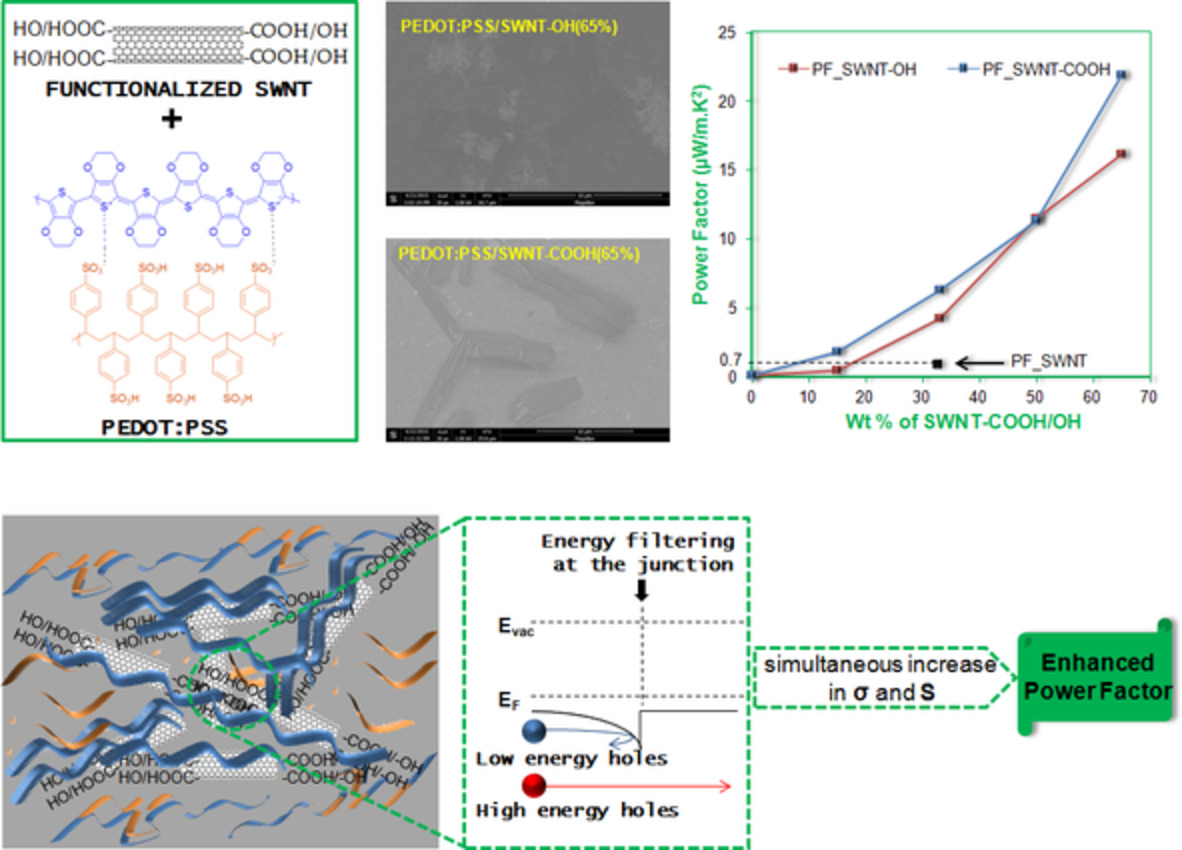
- Thermoelectric (TE) properties of PEDOT:PSS increased with added functionalized SWNT.
- An atypical TE property which is a simultaneous increase in electrical conductivity and the Seebeck coefficient was observed.
- The functional groups induce the polymer chains to adopt an extended conformation, which enhanced TE performance.
Incorporation of pyridinic and graphitic N to Ni@CNTs: As a competent electrocatalyst for hydrogen evolution reaction
- Pages: 9157-9165
- First Published: 31 May 2020
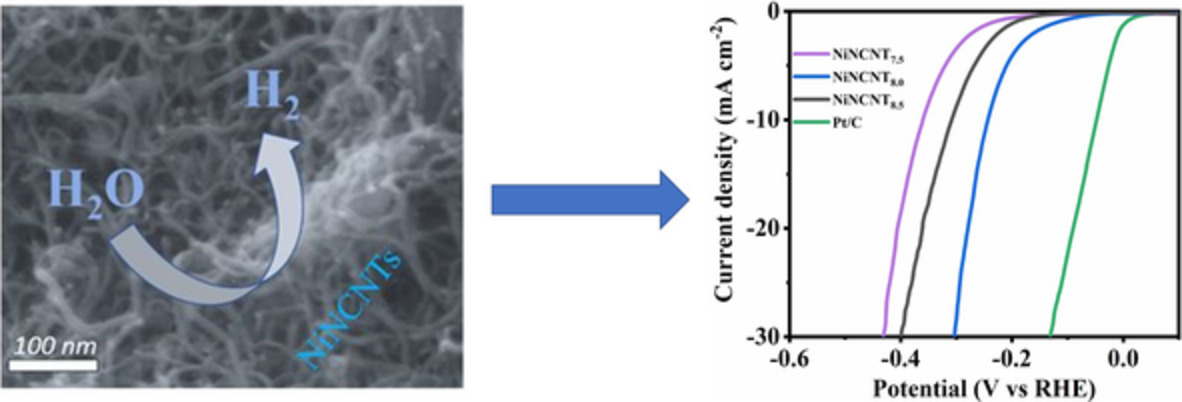
- The incorporation of pyridinic and graphitic N to Ni@CNTs (NiNCNTs) is achieved by using a facile one-step pyrolysis method with readily available precursors of nickel acetate as nickel source, fumaric acid as carbon source and melamine as nitrogen source and reducing agent.
- The hydrogen evolution reaction (HER) activity of the NiNCNTs was explored.
- The high concentration of pyridinic and graphitic N, and the synergy between Ni and N-doped carbon nanotubes enabled the NiNCNTs to show high hydrogen evolution reaction activity.
High-performance textile electrode enhanced by surface modifications of fiberglass cloth with polypyrrole tentacles for flexible supercapacitors
- Pages: 9166-9176
- First Published: 22 June 2020
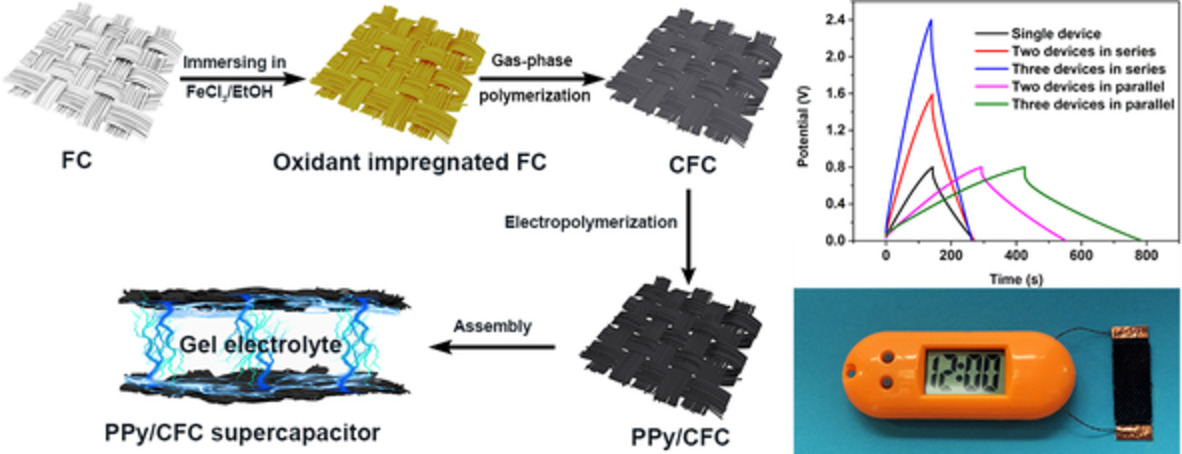
A flexible supercapacitor was designed and fabricated using a two-step polymerization method based on fiberglass cloth and unique morphology of PPy, which possesses an excellent area-specific capacitance of 549.6 mF cm−2 and a remarkable energy density of 48.85 μWh cm−2. In addition, this study contributes an effective path for the application of insulating fabrics in the manufacture of wearable energy storage devices.
Unveiling the roles of alumina as a sintering aid in Li-Garnet solid electrolyte
- Pages: 9177-9184
- First Published: 29 May 2020
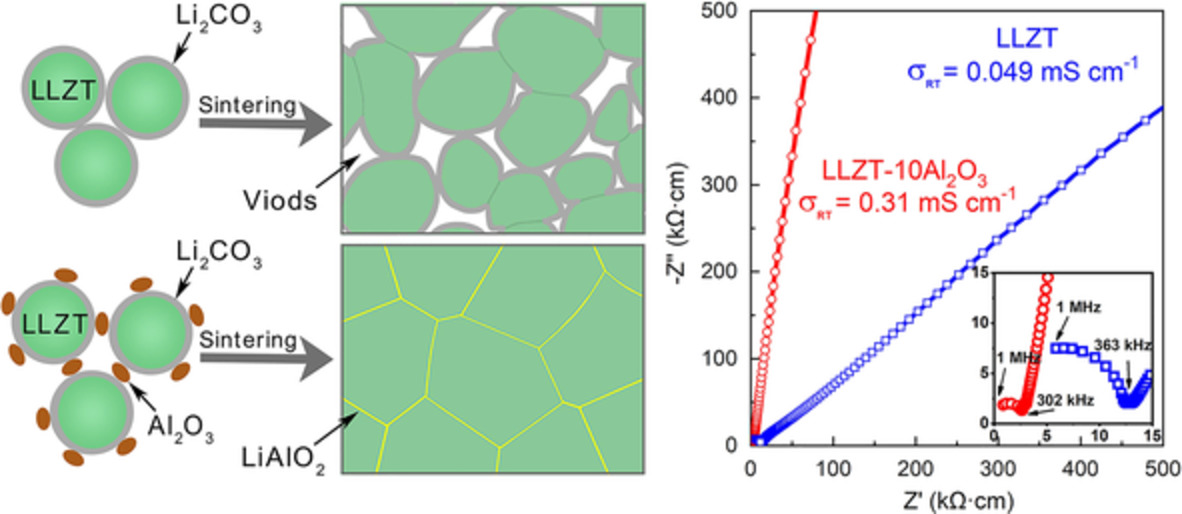
- Al2O3 promotes the decomposition of Li2CO3 formed on Li-Garnet particle surface, and the elimination of Li2CO3 boosters the sintering of Li-Garnet electrolyte.
- The reaction of Al2O3 with Li2CO3 produces a Li-ion conductor, LiAlO2, and the product LiAlO2 decreases grain-boundary resistance.
- Al2O3 addition significantly increases the total conductivity of electrolyte.
Recyclable solid-solid phase-change materials cross-linked by reversible oximecarbamate bonds for solar energy storage
- Pages: 9185-9193
- First Published: 25 June 2020

In present work, the dynamic covalent oxime-carbamate bonds were introduced into the PCMs for cross-linking the flexible PEG chains. It not only can maintain the excellent thermal energy storage property of PEG but also endow SSPCMs with outstanding reprocessing performance, which can reduce the waste of resource and environmental pollution. As such, the OC-PCMs can be used for thermal energy in an environment friendly and sustainable way.
Machine learning approach for solving inconsistency problems of Li-ion batteries during the manufacturing stage
- Pages: 9194-9204
- First Published: 11 June 2020
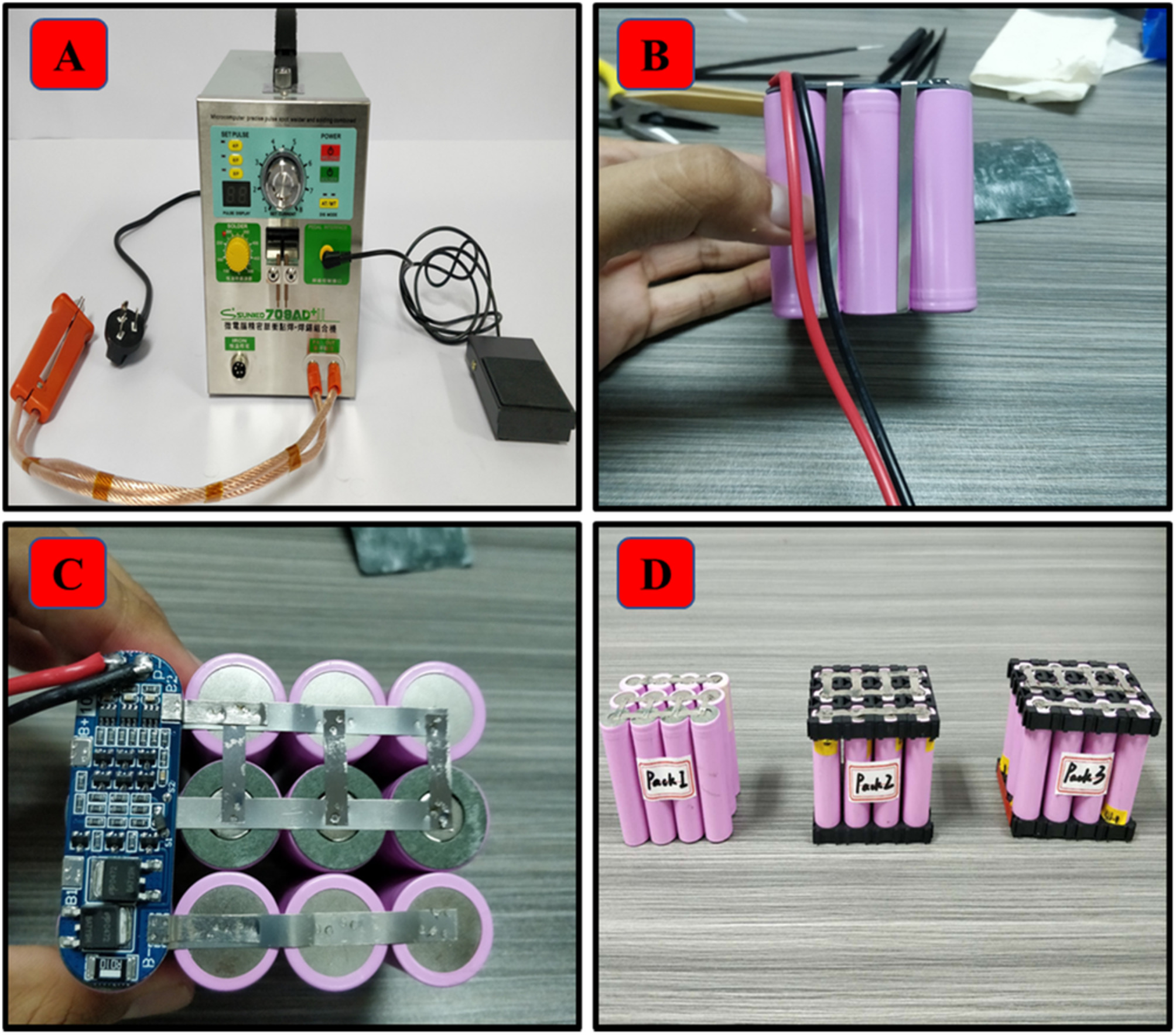
- It is necessary to study the application of lithium batteries in electric ships such as harbor crafts and ferries in building an environment-friendly society.
- This paper focuses on the research on the consistency of lithium batteries on electric harbor crafts.
- The internal resistance, capacity and voltage of lithium battery during charging and discharging were analyzed by cluster analysis based on self-organization mapping (SOM) neural networks.
- The results of cluster analysis are validated by comparative experiments.
- The results show that the performance of the battery pack analyzed by the clustering method is much better than that of the battery pack produced by the original manufacturer.
Multi-metal doped high capacity and stable Prussian blue analogue for sodium ion batteries
- Pages: 9205-9212
- First Published: 09 June 2020
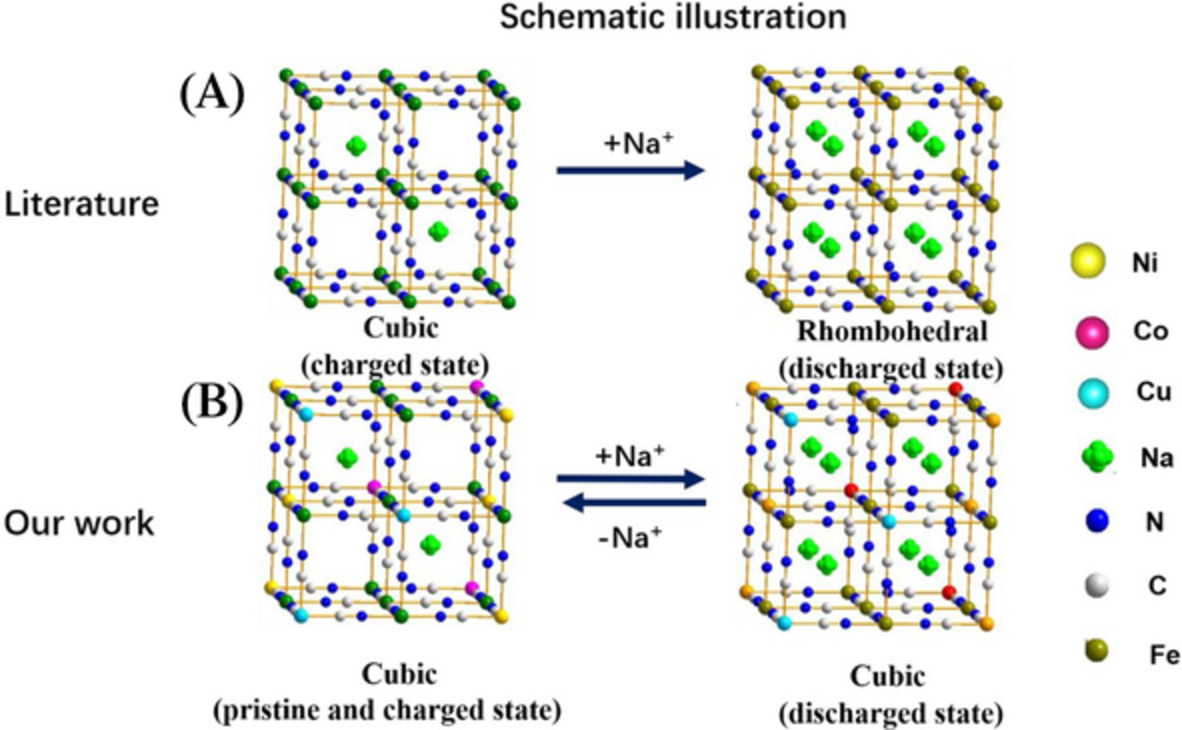
The Cu, Co and Ni doped PBA show discharge capacity with 123 mAh g−1 and stable cycle retention. The redox couples of Co2+/Co3+, Ni2+/Ni3+ and Fe2+/Fe3+ guarantee high capacity, and Cu functions as a pillar to hold stability of the PBA framework.
- Cu, Co and Ni doped PBA are synthesized through co-precipitation method.
- Role of copper, cobalt, ferrate and nickel is discussed thoroughly/
- Phase transition mechanism is analyzed by in situ XRD and DFT calculation.
Carbonized tofu as photothermal material for highly efficient solar steam generation
- Pages: 9213-9221
- First Published: 07 June 2020
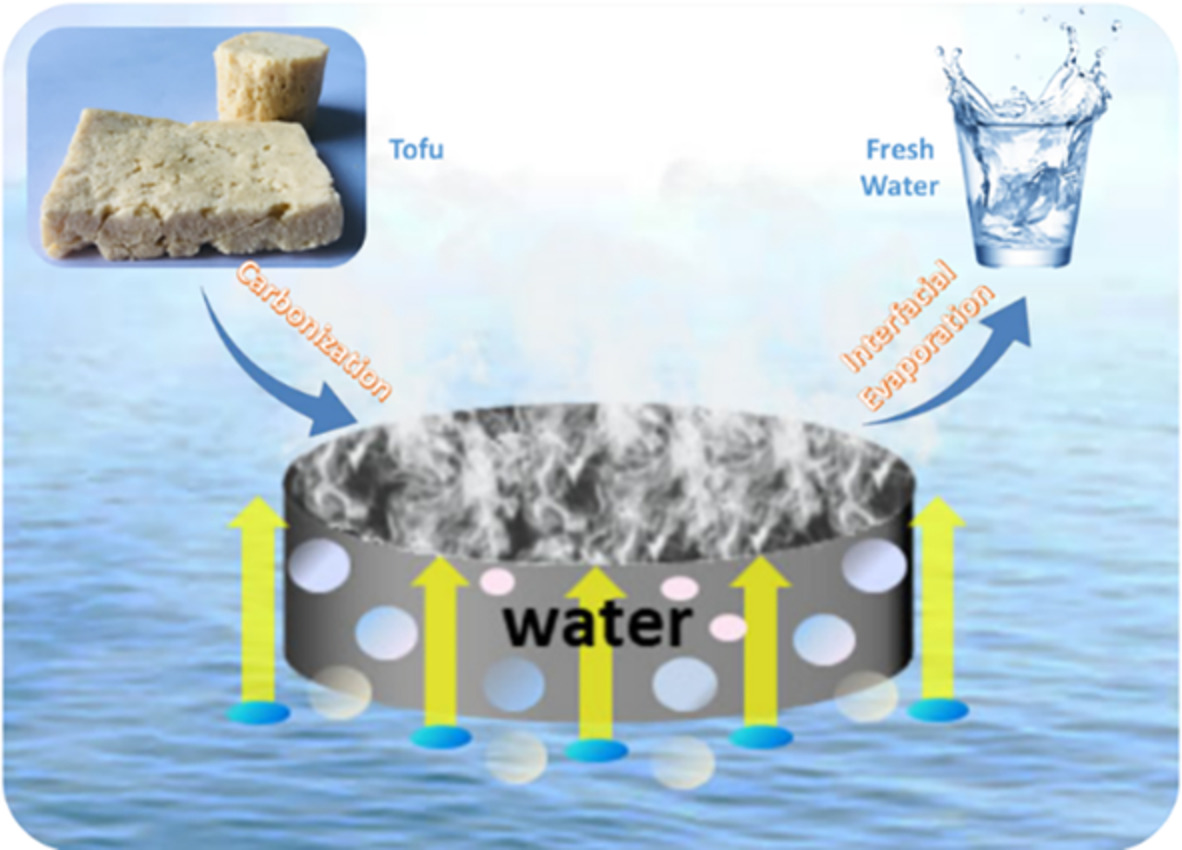
We first time report the fabrication of low-price, long-lasting, and durable-based carbonized tofu (CT) as photothermal materials for highly efficient solar steam generation. On account of super-hydrophilic wettability and abundant pore, CT demonstrated excellent salt tolerance and robustness, which shows immeasurable application potential in seawater desalination and wastewater treatment.
Iron-nickel hydroxide nanoflake arrays supported on nickel foam with dramatic catalytic properties for the evolution of oxygen at high current densities
- Pages: 9222-9232
- First Published: 23 June 2020
One-step surface nitridation of CoO for high-energy-density lithium-ion batteries
- Pages: 9233-9239
- First Published: 29 May 2020





